
- Places to Visit
- Sightseeing
- Practical Tips
- Where to Stay

London Transport Zones
London is divided into 1–9 zones*, but most of it fits into zones 1–6. Central London is zone 1, zone 2 is the ring around zone 1, zone 3 is the ring around 2 and so on.
*zones 7,8 and 9 cover a small area just outside North West London including Watford, Croxley Green, Rickmansworth, Amersham or Chalfont & Latimer.
It’s important to be aware of London’s transport zones and to find out what zone a station is in. Ticket prices for One Day, Weekly or Monthly Travelcards or the money deducted from a Pay as you go Oyster card or contactless card can vary considerably according to how many zones you travel through.
The zones do not apply to bus travel . You can travel by bus all over London (zones 1–6) with any Travelcard.
First time visitor to London? See our guide to London’s transport tickets
London zone map
You can see the zones on a tube map, coloured in either white or grey.
- View a standard PDF version of the tube map
- If you stay in a part of London that is not on the tube network, see the National Rail services map (pdf) to find the zone for your closest train station.
What London transport zones do I need?
Find the closest underground or train station to your accommodation. Then find the zone of the station you want to travel to. If you’re visiting London for sightseeing or to shop this will probably be zone 1.
When you know the zones you need to pay for, what you do depends on the type of ticket/pass you buy:
Weekly or monthly Travelcards
You buy a Travelcard that covers all the zones between where you stay and where you want to visit/your regular final destination. For example:
- if you stay in Shepherd’s Bush (zone 2) and plan to visit central London (zone 1), you need a zone 1-2 Travelcard.
- If you stay in Wimbledon (zone 3) and travel to/from central London, you need a zone 1-3 Travelcard.
Pay as you go Oyster card
If you use a Pay as you go Oyster card , top-up your card with enough money to either pay for a single journey for the zones you travel through or add enough money to cover the cost of the ‘daily cap’ if you want unlimited travel for the day.
Contactless
With a contactless card, you do not have to worry about the zones as the system will calculate the fare for you the next day. Remember to always touch in and out on the tube or local trains (with the same card!) to ensure you are charged the correct amount.
How to pay for transport outside your normal transport zone
There may be occasions when you need to travel outside the zones on your weekly or monthly Travelcard.
The procedure is slightly different if you have a Travelcard loaded on an Oyster card, or a paper Travelcard:
Travelcards on an Oyster card
If you already have a weekly Travelcard for certain zones and want to visit a place outside that zone, top-up your Oyster card with some Pay as you go money to cover the cost of travelling between the last zone on your Travelcard and the zone you want to visit.
For example, if you have a zone 1-2 weekly Travelcard and you want to visit Richmond in zone 4, you need to add extra money to your Oyster to cover the fare for zones 3 and 4.
See Oyster single fares to find a fare. You can add extra money to your Oyster card at a tube station ticket machine.
Paper Travelcards
If you have a paper version of the Travelcard, you need to buy an extension ticket from the underground station ticket machine.
Stations in two zones
Some stations are on the border of two zones. These stations have a white box around their name on the tube map. Tickets to these stations are slightly different.
For example:
- Earl’s Court tube station is in zone 1/2. If you stay in Earl’s Court and take the tube to any other station in zone 1 (central London), you pay the zone 1 single fare with a pay as you go Oyster or contactless card.
- If you travel from Earl’s Court to Heathrow (zone 6), the single fare is charged from zone 2 to zone 6, not from zone 1-6.
- ABBA Arena is in zone 2/3. From zone 1, you pay the zone 1-2 fare. If you are staying in outer London and are travelling to the stadium without travelling through central London (zone 1), you pay the the fare to zone 3.
How to save money on travel to central London from zones 2-6
A major benefit of the Travelcard is that it’s valid on the buses for the whole of London, regardless of the zones you buy.
If you stay in zones 2-6 and want to travel to zone 1 (central London) a good money-saving tip is to buy a weekly or monthly Travelcard excluding zone 1 , but including zone 2. You can then take the tube/train to the zone 2 station close to zone 1 and then use the bus to travel to and around zone 1.
This only works with a weekly or monthly Travelcard, but you will save a money.
- If you stay in zone 5, a zone 1-5 weekly Travelcard is £73.00 .
- A zone 2-5 weekly Travelcard is £42.50 , saving you £30.50 a week
- A zone 1-5 monthly Travelcard is £280.40
- A zone 2-5 monthly Travelcard is £163.20 a saving of £111.70 a month
Popular places to visit outside central London (Zone 1)
Tourist attractions.
Chiswick House – zone 2 (Turnham Green) Cutty Sark – zone 2 Dulwich Picture Gallery – zone 2 Ham House – zone 4 Hampton Court Palace – zone 6 Kenwood House – zone 2 (Archway) Kew Gardens – zone 3 National Maritime Museum – zone 2 Osterley House – zone 4 RAF Museum Hendon – zone 4 William Morris Gallery – zone 3
Westfield London (Shepherd’s Bush/White City) – zone 2 Westfield Stratford – zone 2/3 Camden Market – zone 2
Sport and music venues
The O2 – zone 2/3 Twickenham Rugby Stadium – zone 5 Wembley Stadium – zone 4 Emirates Stadium – zone 2 ABBA Arena – zone 2/3 (See stations in two zones above)
Greenwich – zone 2 Richmond – zone 4 Wimbledon – zone 3
Related pages
- One Day & Weekly Travelcards including zone 1
- Weekly & monthly Travelcards excluding zone 1
- Oyster cards
- Contactless cards
- Bus tickets & passes
Last updated: 23 February 2024
Transport tickets & passes
- Guide to London's transport tickets
- One day & weekly Travelcards
- Zone 2–6 weekly Travelcards
- Bus tickets & passes
- Oyster card
- Oyster single tickets
- Oyster card refunds
- Child tickets & passes
- Local train tickets
Useful information
- Plan your journey
- London transport zones
Popular pages
- Left luggage offices
- Congestion Charge
- 2 for 1 discounts at London attractions
- Top free museums & galleries
- Cheap eating tips
- Heathrow to London by underground
Copyright 2010-2024 toptiplondon.com. All rights reserved. Contact us | Disclaimer | Privacy
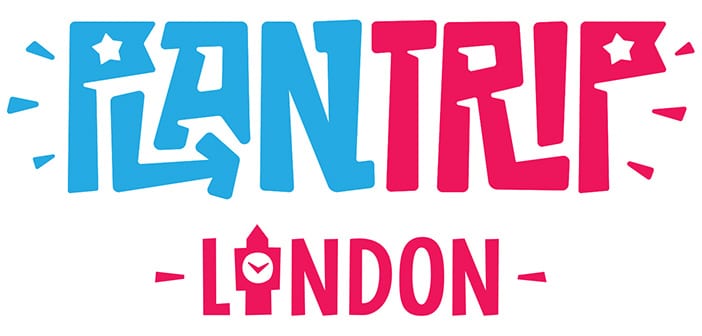
London Travel Zones
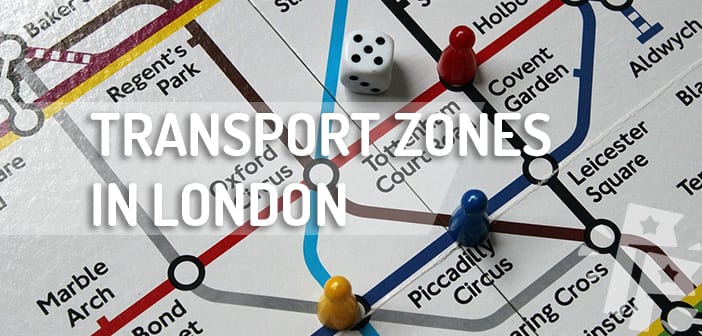
London is divided into travel zones which determine the price of travel on public transport across the city. Therefore, it’s good to understand the London travel zones so you know which Travelcard you need to buy, and it’s a particularly important consideration when choosing where to stay in London. The further your accommodation is from the city centre, the more expensive it will be to travel into the city daily to visit tourist attractions and places of interest.
London is divided into nine radial zones. Looking at the London Underground tube map, you can see that zone 1 is the centre of London, with zones 2-9 extending out in a circle around it.
What to bear in mind about London travel zones when planning a trip to London
Tourist attractions.
Most of London’s most famous tourist attractions are located in the city centre within London’s transport zone one. Here you will find some of the most iconic places of the British capital, including Oxford Street, Regent Street, Piccadilly Circus, Covent Garden, Trafalgar Square, the London Eye, Big Ben, most of London´s top museums and West-End Musicals .
Some of London´s most famous neighbourhoods are also located in zone 1, such as Notting Hill , Chelsea and Kensington.
The most visited tourist attraction outside of zone 1 in London is probably Camden Market which is located in zone 2.
To travel between zones 1 and 9 on public transport, including underground, overground, DLR, buses, trams and trains and even some riverboat services, you can use one of London´s transport cards, such as the Oyster Card or a London Travelcard , or you can even use a contactless debit or credit card.
Stansted and Luton airports are located outside of the London transport zones, so it’s necessary to buy a specific train or bus ticket to get to and from these airports. You can´t use your oyster card or travelcard for these journeys.
Gatwick Airport is also located outside of London, but you can use an Oyster card or contactless payment to travel from Gatwick Airport to London and vice versa.
Heathrow and London City airports are both located within the London travel zones. Therefore, to travel to and from these two airports, you can use Contactless, Oyster Card or Travelcard .
London Travel Zones Map
The best thing to do is look at London´s Tube Map before you travel to London, to familiarise yourself with it. You can find this here: London TFL Tube Map . You will be able to see the different travel zones outlined in this map easily.
What area to stay in when visiting London
If you’re planning a trip to London, the closer you stay to the centre of London, the cheaper your transport costs will be each day, and the less time you’ll spend travelling by underground or bus. Therefore, we highly recommend looking for hotels within London travel zones 1 or 2. You can find more detailed information on where to stay in London here , as well as some recommended hotels within zones 1 or 2.
What areas to look at when deciding to live in London
If you are looking for a place to live in London, it’s often a good idea to take into account the area that you work in. The less distance and zones that you have to commute through each day, the less time and money you’ll spend on travel.
That said, it’s pretty expensive to live in zone 1 of London, so it’s normal to live outside the city centre. We recommend looking at zones 2 and 3 where accommodation is more affordable, yet you can quickly travel into the centre of London on the tube.
Related Posts
London underground, travelling in london with kids, contactless payment on london transport, london oyster card.
Save my name, email, and website in this browser for the next time I comment.
Notify me via e-mail if anyone answers my comment.
Type above and press Enter to search. Press Esc to cancel.
How to get around London: from tubes and trains to bikes and buses
Mar 17, 2024 • 10 min read

With a bus, Tube, boat or bike? We'll help you discover the best ways to get around in London © Kristi Blokhin / Shutterstock
London is a sprawling city of over nine million people. With its combination of Roman walls, Victorian development, post-WWII rebuilding and pockets of ongoing regeneration, it's a jumble of roads, Tube and train lines, and definitely not the most intuitive city to navigate.
However, with apps, good mapping, signage and a bit of patience, it's possible to visit almost all of the city via public transport. From train companies to Transport for London, here's everything you need to know about each mode of transport and the all-important ticketing system.

The Tube (the London Underground) is the quickest and easiest
The London Underground, or "the Tube," is the city's subway running across 11 different color-coded lines, with only about 45% of the Underground network actually operating underground. Despite the never-ending upgrades and engineering works requiring weekend closures and escalators out of action, the Tube is overall the quickest and easiest way of getting around the city. It is also usually the warmest place to wait for your transport in winter, except on those rare above-ground Tube stations.
Be aware though: some stations, most famously Leicester Square and Covent Garden, are much closer in reality than they appear on the Tube map, and going underground to travel between them will take much longer than simply walking between them.
Tip for using the Tube for sight-seeing: The Piccadilly Line stops at some of London’s key sights and neighborhoods – Piccadilly Circus, Covent Garden, Hyde Park Corner and Knightsbridge – and it runs from Heathrow's airport terminals. It's a good Tube line to base yourself near.
Catch the Night Tube on Friday and Saturday nights
The Tube runs roughly 5am to 1am, although when your last train departs does vary by line and the day of the week.
Several lines (the Central, Jubilee, Northern, Piccadilly and Victoria lines) run all night on Friday and Saturday to get revelers home (on what is called the "Night Tube"), with trains every ten minutes or so (and off-peak fares).
London's red buses (and the best sight-seeing bus route)
London's ubiquitous red double-decker buses afford great views of the city, but the going can be slow thanks to traffic jams and dozens of commuters getting on and off at every stop.
There are excellent bus maps at every stop detailing all routes and destinations served from that particular area (generally a few bus stops within a two- to three-minute walk, shown on a local map).
Bus services normally operate from 5am to 11:30pm. Many bus stops have LED displays listing bus arrival times, although downloading an app such as Citymapper to your smartphone is the most effective way to keep track of when your next bus is due.
Top tip for taking the bus: Bus Route 15 is no longer served by heritage Routemaster buses but is still a useful route for tourists, connecting the Tower of London, St Paul's, the Strand and Trafalgar Square.

The Elizabeth Line
London’s shiny new "purple" line, connecting towns as far west as Reading and as far east as Shenfield to central London via hubs like Paddington, Liverpool Street Station and Tottenham Court Road, is now open for business .
The line also offers a quicker (although more expensive!) route between Heathrow airport and central London.
Getting around London by foot
London is too large to realistically cover on foot, but once you're in an area of interest, you can't beat walking for proper neighborhood exploration. A good map or GPS is recommended, as London's winding streets can quickly disorientate. Bridges cross the Thames at regular intervals, and there are two pedestrian tunnels beneath the river: one at Greenwich and one at Woolwich.
If you're exploring London in winter, wrap up with a warm hat, gloves and scarf. In central London, an umbrella is a liability on narrow footpaths; you're better off wearing a waterproof coat with a hood. Ice and snow are not uncommon in the depths of winter, so watch for slippery streets in the mornings.
Another key hazard for walkers in London can be cyclists, or rather pedestrians are a worry for them. Looking out for cars when you cross the road goes without saying, but in London, many streets allow cyclists to ride against a one-way driving system on "contra-flow" lanes. This means you need to look both ways before crossing roads, especially as you won't hear a bike coming!

Better on a boat on the Thames
Several companies operate along the River Thames; only Uber Boat by Thames Clippers really offers commuter services, however. It’s fast and pleasant, and you’re almost always guaranteed a seat and a view. Thames Clippers boats run regular services between Embankment, Waterloo (London Eye), Blackfriars, Bankside (Shakespeare's Globe), London Bridge, Tower Bridge, Canary Wharf, Greenwich, North Greenwich and Woolwich piers. Tickets can be bought at the piers, or pay-as-you-go with your Oyster or Contactless card (see below for more information on paying fares).
Cycling is a surprisingly quick way to cross London
Cycling is generally a great way to get around the city , although city traffic can be intimidating for less-confident cyclists – it is important to keep your wits about you. The city has tried hard to improve the cycling infrastructure, by opening new "cycle superhighways" for commuters and "quietways" which are back street cycle lanes for leisure cyclists. The public bike-hire scheme Santander Cycles is particularly useful for visitors with bike-hire docks throughout the city. It costs £2 for unlimited journeys up to 30 minutes and £2 for each additional 30 minutes. Download the app to find the closest bikes and where there are spots available to drop off your bike near your destination. Cycling is also an excellent option for exploring parks and along the Thames.

London's black cabs and other taxi options
Licensed black cab drivers have "The Knowledge", acquired over three-to-five years of rigorous training and a series of exams. They are supposed to know 25,000 streets within a six-mile radius of Charing Cross/Trafalgar Square and the 100 most-visited spots of the moment, including clubs and restaurants.
Cabs are available for hire when the yellow sign above the windshield is lit; just stick your arm out to signal one. Fares are metered, with the initial charge of £3.80 rising by increments of 20p over distance traveled or time taken, which varies depending on the tariff being used. You can pay for your journey with a credit or debit card or cash.
Minicabs (private hire cars) are cheaper alternatives to getting a black cab, but they must be booked in advance through a cab office or an app and cannot be hailed on the street. Fares are set in advance rather than metered.
Ride-share apps are also in operation in London, although their introduction and impact on the city, from undercutting traditional black cabs to accusations of increased car congestion, is still hotly debated by locals.
Top tip for taking a black cab: Despite the name, not all of London's black cabs are black! They are broadly all shaped the same, though, and will have a yellow sign above the windshield that says "Taxi."
Driving a car in London
As a visitor, it’s very unlikely you’ll need to drive in London. Much has been done to encourage Londoners to get out of their cars and onto public transport (or on their bikes), and the same disincentives should keep you firmly off the road: the additional Congestion Charge (CC) and Ultra Low Emission Zone (ULEZ) fees, extortionate parking costs, the high price of fuel, fiendishly-efficient traffic wardens, and ubiquitous CCTV cameras recording cars parked (even momentarily) on double yellow lines or not giving way when they should... it's probably not worth it.
Riding above the Thames on a cable car
The Emirates Air Line is a cable car linking the Royal Docks in East London with North Greenwich some 90m above the Thames. The journey is brief and rather pricey, but the views are stunning. The Air Line is step-free, and the cable cars can accommodate most motorized wheelchairs.
The DLR (Docklands Light Rail)
The DLR, or Docklands Light Railway, is a driverless train network operating in the eastern part of the city. It's likely you'll take a ride on it if you're heading to the Emirates Air Line cable car or arriving/departing via London City Airport. It's a winner for travelers with children, who like to pretend they're driving the train from the front carriage.
London Overground and the suburban train network
The Overground train network is part of Transport for London and operates mainly beyond the center of London (although some lines do pass through Zone 1 so pay attention if you're trying to avoid Zone 1 fares). In February 2024 the sprawling Overground network was rebranded into six separate lines, named to celebrate the capital’s modern history and diversity. Not all Londoners were impressed by the names.
There are various private companies operating trains in London that run out to the suburbs. The train network is particularly good for any day trips out of London , but pay attention to which operator you've booked train tickets with as more than one company will depart from the same station.

Accessible transportation in London
London is a frustrating mix of inconsistent user-friendliness for travelers with access needs . All tram stops, the Emirates Air Line (cable car) and DLR stations have step-free access, as do all Thames Clippers and most piers (the exceptions are Cadogan Pier, Wandsworth Riverside Quarter Pier and London Bridge City Pier). However, only around a quarter of Tube stations and half of Overground stations have step-free access. This means that if you need to go through an interchange on the Tube network, you may find yourself facing an unexpected flight of stairs. There is often a gap between the train and the platform to contend with, as well. Careful planning and notification of a staff member are recommended before you board a train.
Buses are a much better bet: all can be lowered to street level when they stop, and wheelchair users travel free. Wheelchair users enter through the middle doors and have priority use of the wheelchair space over stroller users. All black cabs are meant to be wheelchair-accessible, but power wheelchair users should note that the space is tight, and headroom can be insufficient.
Guide dogs are universally welcome on public transport. Pavements are generally in good repair, pedestrian crossings relatively frequent and well-placed, and curb cuts sufficient not to leave you stranded. The further you get from the center of London, the more likely it is that you'll have the occasional issue with a missing curb cut.

Transport passes, tickets and fares
Transport for London operates the integrated transport network in the city and is the best source for up-to-date travel information, including timetables and fares. Children under five travel free with a fare-paying adult. Use the larger automatic gates to pass through with children, strollers, wheelchairs or luggage.
You can buy tickets for single journeys at ticket offices and self-service machines at most stations, but it's cheaper and much more convenient to either use Contactless, an Oyster card, or a mobile payment with a smartphone (unless you're paying overseas transaction fees).
Contactless: This is any credit or debit card that allows for contactless payment. You hold it near the yellow card readers at ticket barriers for the Underground and rail systems to mark the start (and end) of your journey. This is referred to as "touch in, touch out." The cost of the journey will automatically be deducted from your account.
Oyster cards: These are pre-paid reusable cards that can be topped up with funds either at a ticket machine or online. They are sold at most Tube/train stations and many newsagents (£5 charge) and follow the same "touch in, touch out" system.
Bus journeys: Buses are all cash-free, meaning you must either have a ticket in advance or pay with Contactless or an Oyster card when you board. You only need to "touch in" at the start of your journey. You will pay a flat fee no matter how long you are on board.
Travel zones for Tube and rail
The city's Tube and rail systems are divided into zones, radiating outwards from Zone 1 in the very center to Zone 9 as the outer section in Greater London to the north (it goes as far as Zone 6 to the south). Fares are capped, so providing you use the same card/device throughout your day and travel within the zones system, you'll pay a reduced Travelcard rate.
If you're taking a train beyond the London zones, perhaps for a day trip to the coast or farther afield, you will need to buy a separate train ticket.
This article was first published Mar 30, 2021 and updated Mar 17, 2024.
Explore related stories

Tips & Advice
Sep 17, 2024 • 12 min read
Visitors to Europe are bowled over by its natural beauty, epic history, rich culture and dazzling diversity. Here are the best places to visit.

Sep 3, 2024 • 7 min read
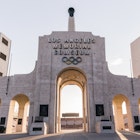
Aug 1, 2024 • 5 min read

Jul 31, 2024 • 5 min read

Jul 18, 2024 • 2 min read

Jul 17, 2024 • 3 min read

Jun 15, 2024 • 17 min read

Jun 12, 2024 • 8 min read

May 14, 2024 • 7 min read

Mar 22, 2024 • 9 min read
Winterville
London Zones Explained | A Guide to London Fare Zone Stations, Maps, Prices, and More
October 11, 2022
Winterville Staff
London is the largest city in the United Kingdom by area and population. It is home to more than nine million people living in its 607 sq mi total area.
Even though London is the largest city, the commute is effortless and convenient thanks to its efficient wide network of public transportation .
Not to mention it offers several payment options such as Pay as you go Cards, Contactless devices, and Travelcards . But before buying any of the mentioned payment cards, you need to know first about the Fare Zones.
London has divided its transportation stations into several Zones in all 32 London boroughs .
What is the purpose of Fare Zones? Simple, to compute your total fare according to your journey’s distance based on the zones you traveled to.
Fare Zones are applied to Tube , DLR , Elizabeth Line , London Overground , River Bus , and most National Rail services.
Buses and trams don’t use Fare Zones since there is already a standard fare set.
Before you hop on the iconic red London buses , fly through the skies with Emirates Cable Car , cruise the river with River Bus , or ride the London Underground , learn about the Fare Zones and which stations and routes are covered.
In this article, you will know about:
How Many Zones in London
What are the zones in london, london zone map, london fare zone rates, maximum journey time per zone, zones 1 to 6 popular tourist attractions, final thoughts.
- 1 How Many Zones in London
- 2.1.1 Fare Zone 1 Stations
- 2.2.1 Fare Zone 2 Stations
- 2.3.1 Fare Zone 3 Stations
- 2.4.1 Fare Zone 4 Stations
- 2.5.1 Fare Zone 5 Stations
- 2.6.1 Fare Zone 6 Stations
- 2.7.1 Fare Zone 7 Stations
- 2.8.1 Fare Zone 8 Stations
- 2.9.1 Fare Zone 9 Stations
- 2.10 River Bus London Zones and Piers
- 3 London Zone Map
- 4.1 Pay as you go Caps and Travelcard Adult Rates
- 4.2 Oyster Photocard Caps and Travelcard Child Rates
- 4.3 Disabled Persons Railcard Caps and Travelcard Rates
- 4.4.1 River Bus London One-Way and Round Trip Prices Table
- 4.4.2 Paper Ticket Prices at Piers of River Bus London
- 5 Maximum Journey Time per Zone
- 6.1.1 Big Ben
- 6.1.2 Palace of Westminster
- 6.1.3 Tower of London
- 6.1.4 London Eye
- 6.1.5 Madame Tussauds
- 6.2.1 Chiswick House
- 6.2.2 Cutty Sark
- 6.2.3 Dulwich Picture Gallery
- 6.2.4 Kenwood House
- 6.2.5 National Maritime Museum
- 6.3.1 Royal Botanic Gardens, Kew Gardens
- 6.3.2 William Morris Gallery
- 6.3.3 The O2
- 6.3.4 Westfield Stratford City
- 6.3.5 ABBA Arena
- 6.4.1 Ham House
- 6.4.2 Osterley Park and House
- 6.4.3 Royal Air Force Museum London
- 6.4.4 Wembley Stadium
- 6.5.1 Twickenham Stadium
- 6.6.1 Hampton Court Palace
- 7 Final Thoughts
London is divided into nine Fare Zones that are used by Tube , DLR , Elizabeth Line , London Overground , and most National Rail services. The nine Zones are as follows:
If you are traveling by River Bus , the Zones are categorized into West Zone, Central Zone, and East Zone.
What are Zones 1 to 6 in London? Zones 1 to 6 have the most famous attractions in London, of which Zones 1 and 2 are the most touristy.
Zone 1 is the city center and is home to the most popular landmarks, including the Tower of London, the London Eye, and Big Ben.
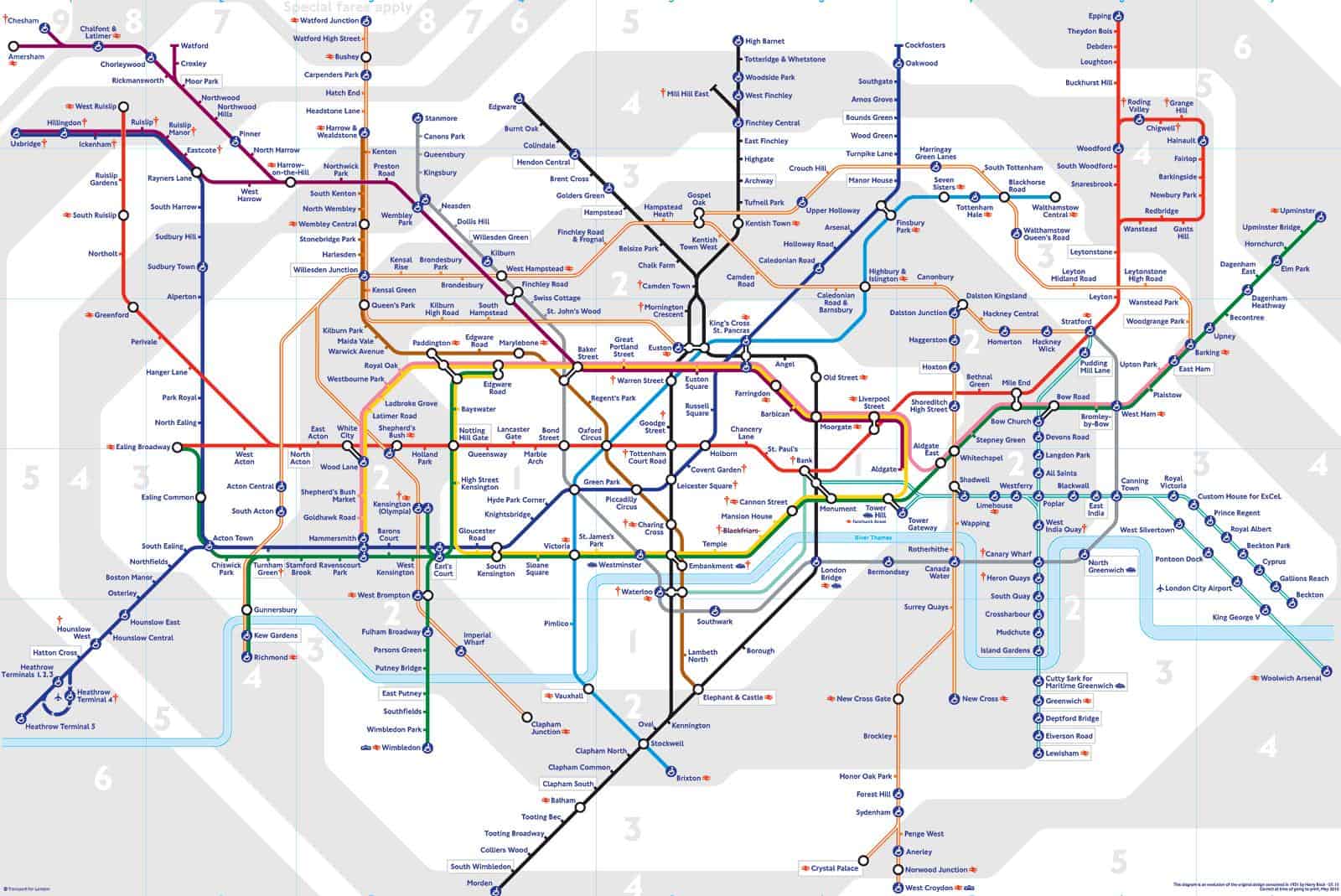
Look at the map, you can see the zones between grey and white colours.
Some tourists venture further to Zone 2 for its trendy areas such as Notting Hill , Arsenal FC Stadium, Chelsea FC Stadium, and London Zoo.
Zone 6 is one of the most traveled zones, not because of attractions but for its Heathrow Airport . As for Zones 7 to 9, these are considered to be the outskirts of the city and usually do not have many attractions to explore.
Let’s dive deeper into the nine Fare Zones and know which stations and places of interest there are in each zone.
Read more about the London Underground Map .
Fare Zone 1
Zone 1 is used by c2c, Chiltern Railways, Docklands Light Railway , London Overground , London Underground , Network Rail, South Western Railway, Southeastern, and Thameslink.
It is the central zone that has the most main tourist attractions, covering major areas such as the City of London, London Bridge, Waterloo, Paddington, Kensington, and West End, to name a few.
Fare Zone 1 Stations
Fare zone 2.
Zone 2 covers areas in the inner zone such as Notting Hill , Regents Park, Camden, and Shoreditch.
It has stations of c2c, Docklands Light Railway , Elizabeth line , Great Northern, London Overground , London Underground , Network Rail, South Western Railway, Southeastern, Southern, and Thameslink.
From Piccadilly Circus, the range of Zone 2 spans up to about five miles.
Fare Zone 2 Stations
Fare zone 3.
Zone 3 covers the areas of Kew Gardens, Wimbledon, Greenwich, London City Airport, Hampstead, Horniman Museum, and Olympic Park. It stretches up to almost eight miles from Piccadilly Circus.
Some stations of Docklands Light Railway , Elizabeth line , Great Northern, Greater Anglia, London Overground , London Underground , South Western Railway, and Southeastern are within the zone.
Fare Zone 3 Stations
Fare zone 4.
Zone 4 is included in the outer zones of the London Fare Zone. It is where you will find Richmond Park, Wembley Stadium, and RAF Museum. The coverage reaches up to about 10 miles from Piccadilly Circus.
Fare Zone 4 Stations
Fare zone 5.
Zone 5 is known for Twickenham, home to the Twickenham Stadium and the England Rugby Football Union.
It is a suburban district filled with 18th Century architecture. The area is about 12 miles southwest of Central London.
Fare Zone 5 Stations
Fare zone 6.
Zone 6 is the outer region of the Fare Zone and covers some of the end stations of several lines such as the Central line , District line , Thameslink, Heathrow Express, Elizabeth line , Metropolitan line , Piccadilly line , and London Overground .
It is widely used for journeys going to and coming from Heathrow Terminals 2 and 3 , Heathrow Terminal 4, and Heathrow Terminal 5. The area is about 16 miles from Piccadilly Circus.
Fare Zone 6 Stations
Fare zone 7.
Zone 7 covers a few stations of Northern London for Greater Anglia, London Overground , and the Metropolitan line of the London Underground .
The home county Hertfordshire is within the zone, which is bordered by Greater London to its south.
Fare Zone 7 Stations
Fare zone 8.
Zone 8 contains Cheshunt station, the terminal station of London Overground . It also has one station on the London Underground , Chalfont & Latimer station. There are no major tourist attractions in this Zone.
However, you can visit the Harry Potter Studio or the Warner Bros. Studio Tour when you go beyond Watford Junction station, a station already within the Outside Fare Zone and after the Watford High Street station of Zone 8.
Fare Zone 8 Stations
Fare zone 9.
Zone 9 covers the end stations of the Metropolitan line, the Chesham and Amersham stations. It also contains Brentwood station on the Elizabeth line . There are no major tourist attractions within the zone.
Fare Zone 9 Stations
River bus london zones and piers.
Although you may find the piers on the Tube and Rail map, the River Bus uses its own zones to calculate the fare.
You can read more information about the River Bus piers with the guide Cruise London Sights with River Bus London .
What London Zone am I in? To answer this question, you can access and download detailed maps of London transportation stations and zones provided by the Transport of London (TfL).
See more about London zone map .
When you look at the Tube and Rail map , you will see the numbered gray and white zones which indicate the Fare Zones 1 to 9. Alternatively, you can also check the list of stations outlined above to see your current station’s zone number.
Check the maps below to see which zones the stations are in. It includes the London Zones 1-6 map and Zones 7-9 map.
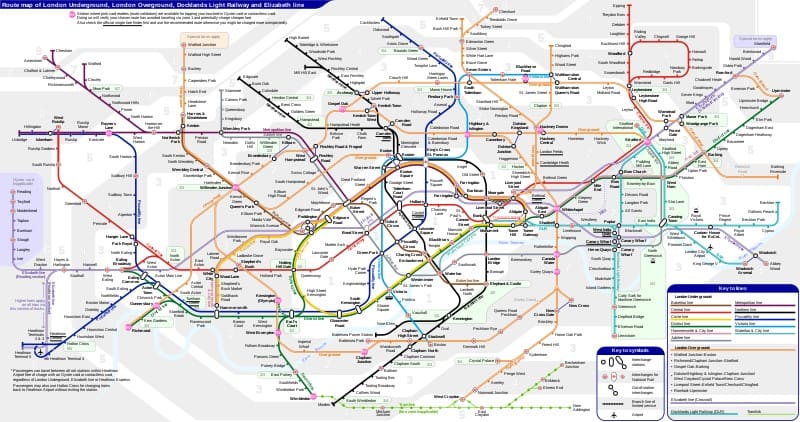
(London Zones 1 9 Map by Sameboat via Wikimedia Commons )
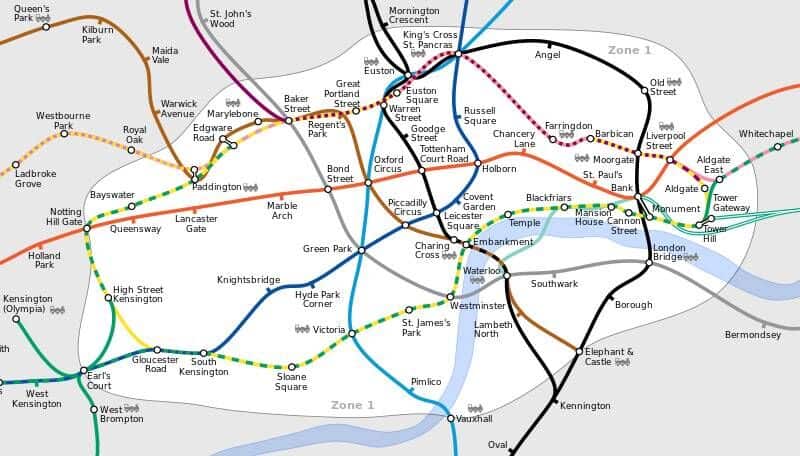
(London Underground Zone 1 by Edg2s via Wikimedia Commons )
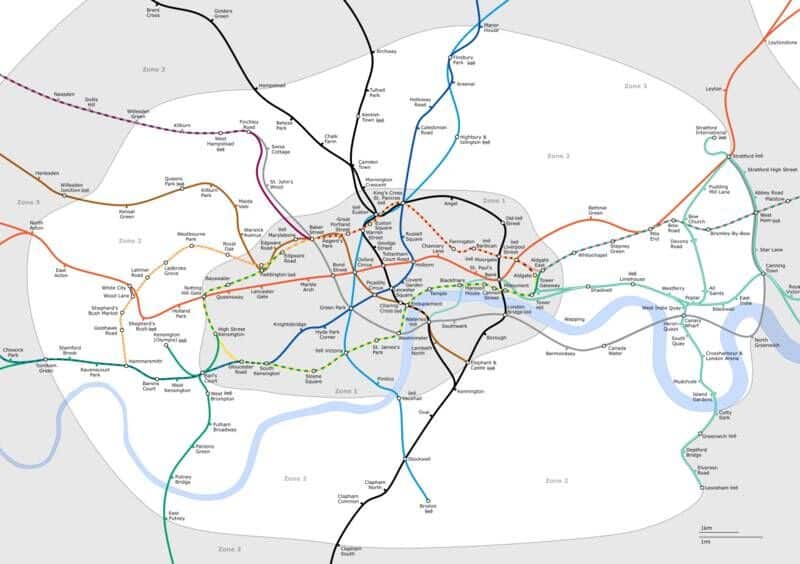
(London Underground Zone 2 by Edg2s via Wikimedia Commons )
Now that you know about the London Zones, you can now calculate the fare you have to pay.
Basically, the more zones you travel to, the higher the fare. The rates vary according to the type of payment option and journey times.
You can pay for your fare with Pay as you go cards such as Oyster Card , Visitor Oyster Card , and Contactless Card , or with a Travelcard .
If you do not have any of the mentioned payment cards, you can still purchase a paper ticket but for a higher price. Please note buses in London only accept cashless payments.
To know about the pros and cons of each card, read the guide Visitor Oyster Card Vs Oyster Card Vs Travel Card Vs Contactless Card .
Know about the single fare costs using the Single fare finder tool by selecting your start and end stations and the passenger type.
Alternatively, you can also search the fare cost by selecting the start and end zones using the Caps and Travelcard prices tool.
If you are traveling to a station located in two zones such as Abbey Road (2 & 3) or Hoxton (1 & 2) stations, the zone with the cheaper price is what you usually pay for.
How much is a London Travelcard All Zones? It depends on the number of zones included and the type of Travelcard.
You can add or reduce zones on your Travelcard and choose between a Day Anytime (£25.70), Day Off-peak (£15.30), 7 Day (£100.20), Monthly (£384.80), and Annual Travelcard (£4,008).
When you use a Pay as you go card, you have the option to put a cap or limit per day or week and select the number of zones you wish to add.
Check the tables below to see a complete list of fare rates per zone, payment card, and passenger type.
Pay as you go Caps and Travelcard Adult Rates
The cost applies to Tube , DLR , Elizabeth line , London Overground , and most National Rail services.
It does not apply to journeys made on the Southeastern high-speed trains and Heathrow Express services.
Oyster Photocard Caps and Travelcard Child Rates
Children between 5 to 10 years old with a 5-10 Zip Oyster photocard travel for free.
Children between 11 to 15 years old with an 11-15 Zip Oyster photocard , 16+ years old with a 16+ Zip Oyster photocard , and students above 18 years old with an 18+ Student Oyster photocard get discounted rates.
Disabled Persons Railcard Caps and Travelcard Rates
Disabled persons have discounted fares for both Pay as you go and Travelcards in all nine zones.
Check the complete list of Tube and rail fares to learn more about discounted rates for other passenger types.
River Bus London Prices and Tickets
Once you obtain a Pay as you go card or a Travelcard , you will have to pay another different fare for the West, Central, and East Zones of River Bus .
For instance, although you can have unlimited journeys for a fixed price with a Travelcard , you can only get a 33% discount for a one-way or roundtrip River Bus ticket.
Similar to Tube and rail, the paper ticket standard prices are also more expensive than Pay as you go or Travelcard rates.
For more information on tickets, you can also refer to Uber Boat by Thames Clippers ticket page .
River Bus London One-Way and Round Trip Prices Table
Paper ticket prices at piers of river bus london.
Despite the standard fares set, keep in mind that you need to travel within the maximum journey time per zone to avoid paying for two maximum fares.
You may be charged a maximum fare of £8.90 in Zones 1 to 9 or up to £26.00 for journeys Outside Fare Zones and on the Heathrow Express.
If you exceed the maximum journey time on a single journey, wait for at least two days to get an automatic refund or up to eight weeks to claim a maximum fare refund online.
Take note that you can only claim up to three maximum fare refunds in a month. The maximum journey time varies on the day of the week, zone, and time of the day. Check the table below to learn more.
If you plan to travel across Zones 1 to 6, here are some areas of interest to visit. You can make the most of the zones included in your card by traveling to the popular tourist attractions listed below.
在 Instagram 查看这篇帖子 UK Parliament (@ukparliament) 分享的帖子
Address: London SW1A 0AA, United Kingdom
Phone: +44 20 7219 4272
Visit Website
Palace of Westminster
Phone: +44 20 7219 3000
Tower of London
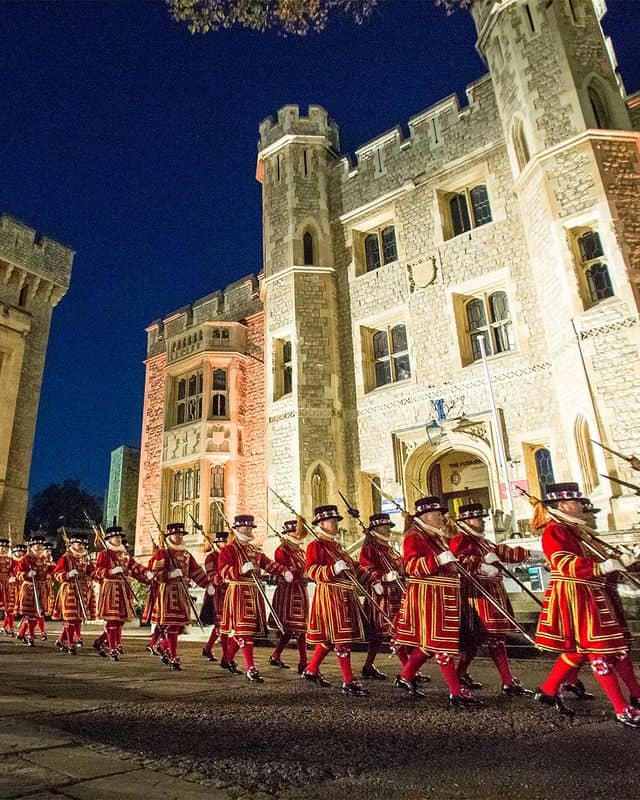
Address: London EC3N 4AB, United Kingdom
Phone: +44 20 3166 6000
在 Instagram 查看这篇帖子 The lastminute.com London Eye (@londoneye) 分享的帖子
Address: Riverside Building, County Hall, London SE1 7PB, United Kingdom
Phone: +44 20 7967 8021
Madame Tussauds
在 Instagram 查看这篇帖子 Madame Tussauds London (@madametussauds) 分享的帖子
Address: Marylebone Rd, London NW1 5LR, United Kingdom
Phone: +44 871 894 3000
Chiswick House
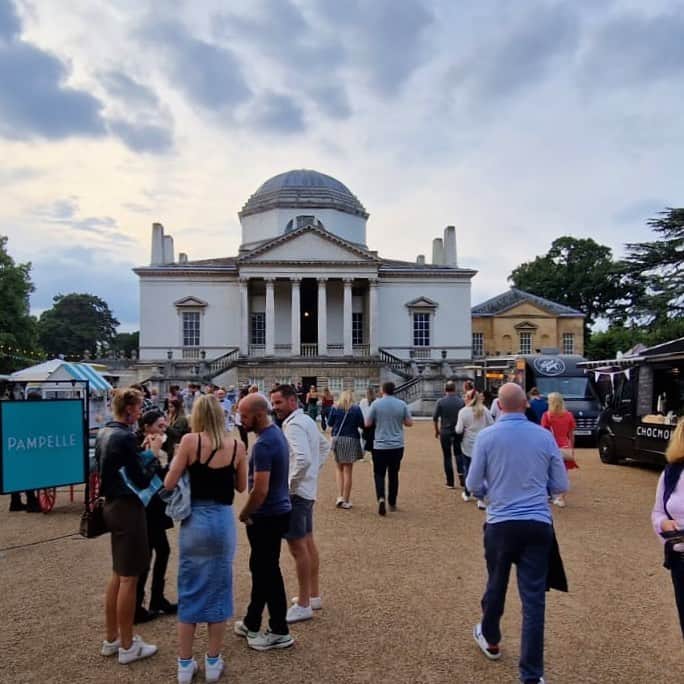
Address: Chiswick House & Gardens, Burlington Lane, Chiswick London W4 2RP
Phone: +44 020 3141 3350
Address: King William Walk, London SE10 9HT, United Kingdom
Phone: +44 20 8858 4422
Dulwich Picture Gallery
在 Instagram 查看这篇帖子 Dulwich Picture Gallery (@dulwichgallery) 分享的帖子
Address: Gallery Rd, London SE21 7AD, United Kingdom
Phone: +44 20 8693 5254
Kenwood House
Address: Hampstead Ln, London NW3 7JR, United Kingdom
Phone: +44 370 333 1181
National Maritime Museum
Address: Romney Rd, London SE10 9NF, United Kingdom

Royal Botanic Gardens, Kew Gardens
在 Instagram 查看这篇帖子 Kew Gardens (@kewgardens) 分享的帖子
Address: Richmond, United Kingdom
Phone: +44 20 8332 5655
William Morris Gallery
Address: Lloyd Park, 531 Forest Rd, London E17 4PP, United Kingdom
Phone: +44 20 8496 4390
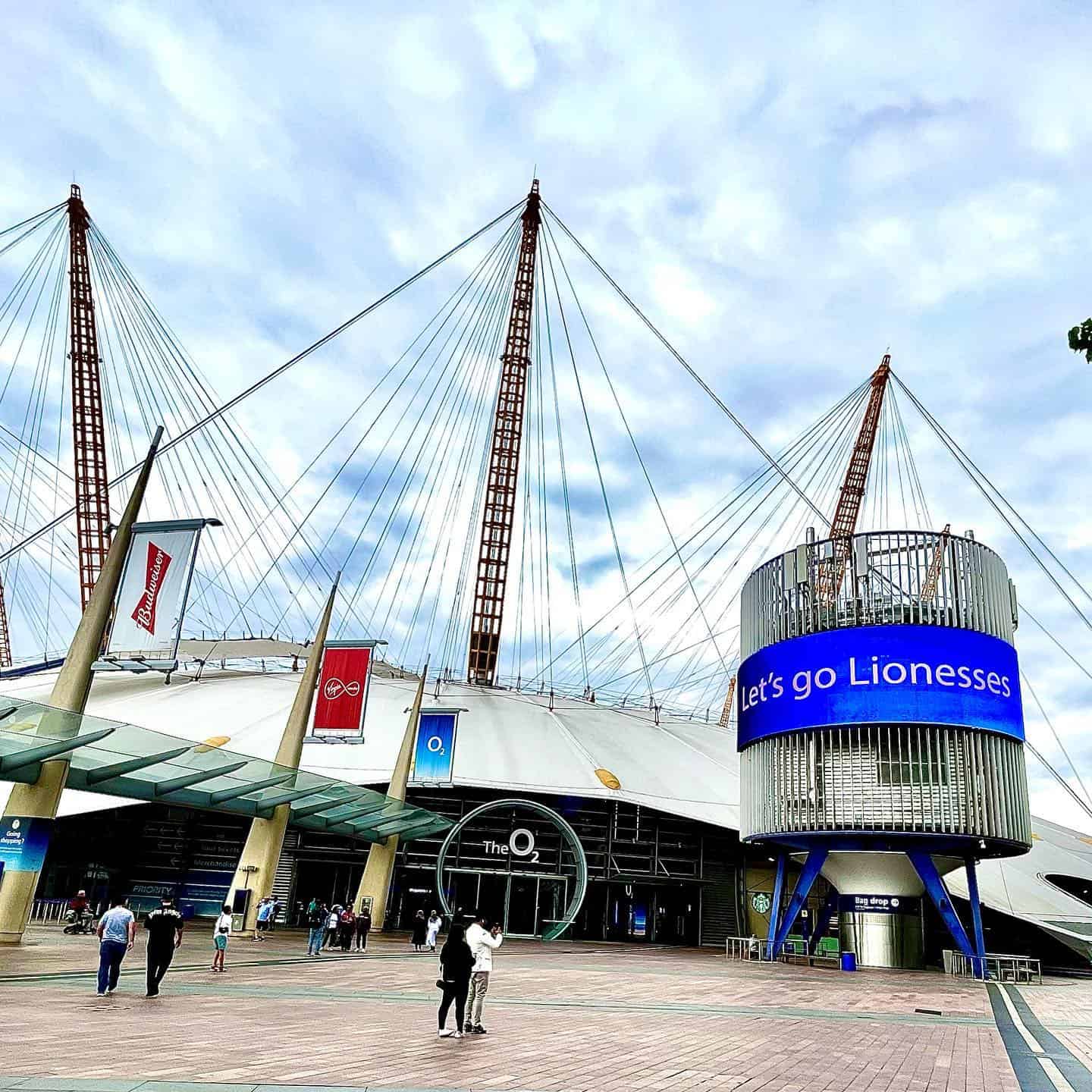
Address: Peninsula Square, London SE10 0DX, United Kingdom
Phone: +44 20 8463 2000
Westfield Stratford City
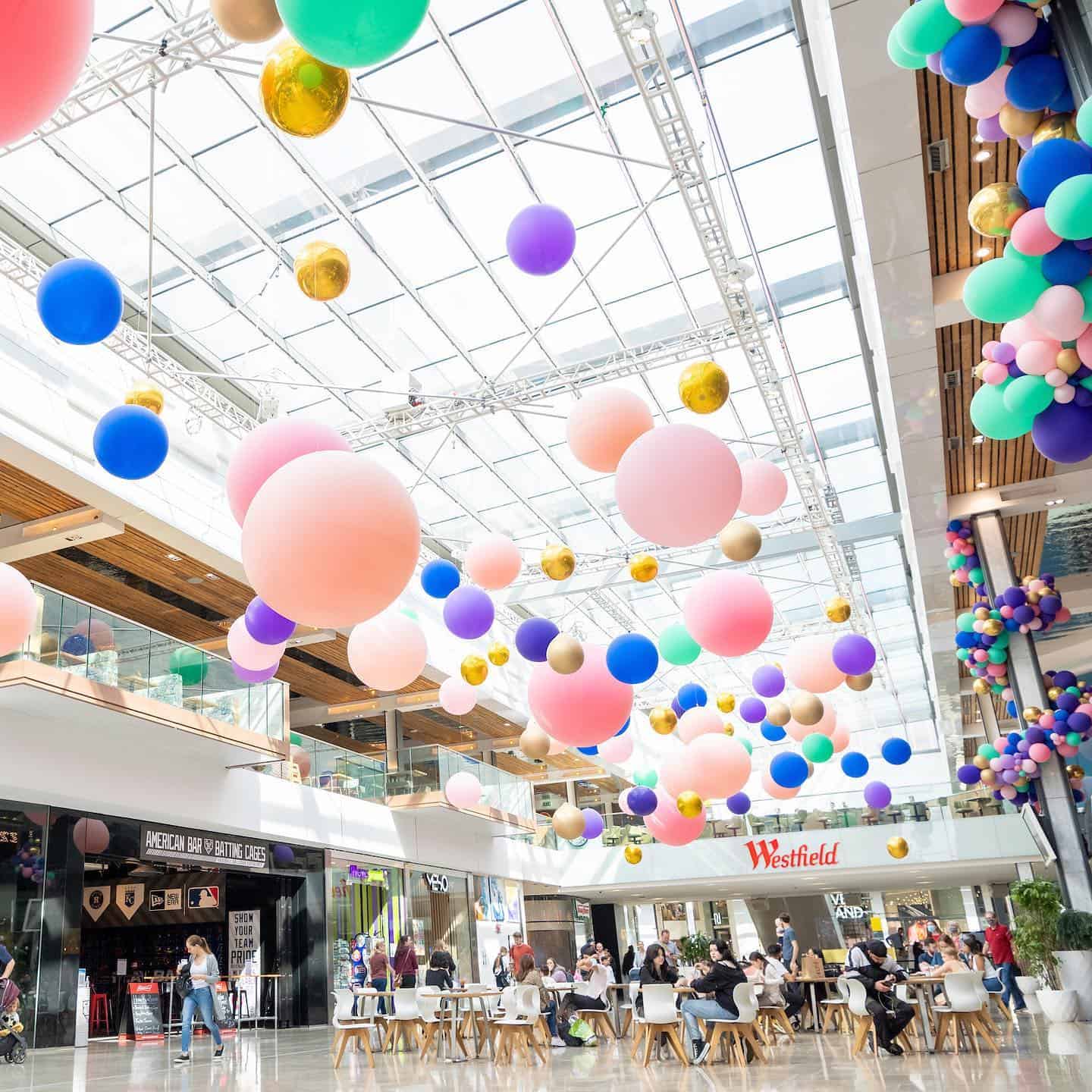
Address: Montfichet Rd, London E20 1EJ, United Kingdom
Phone: +44 20 8221 7300
Address: 1 Pudding Mill Ln, London E15 2RU, United Kingdom
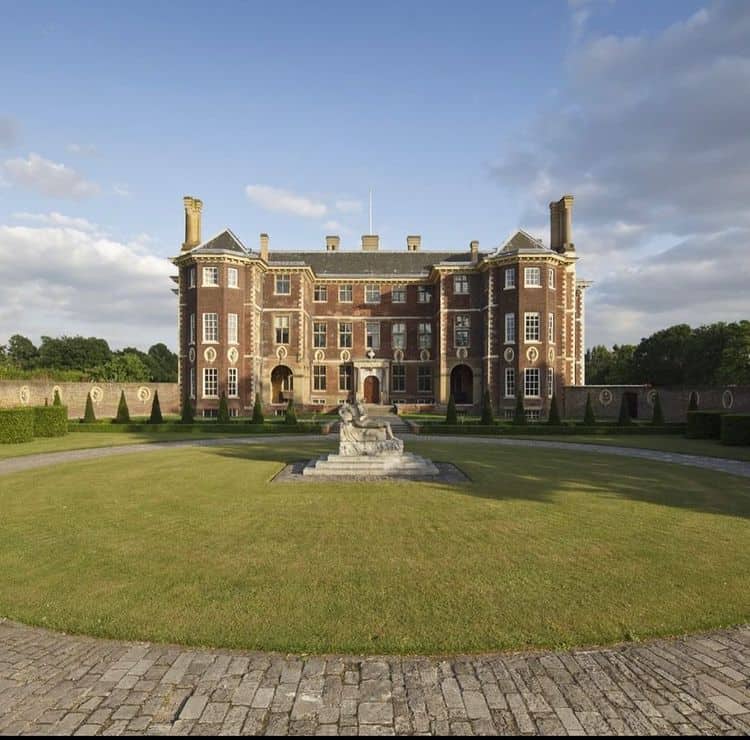
Address: Ham St, Ham, Richmond TW10 7RS, United Kingdom
Phone: +44 20 8940 1950
Osterley Park and House
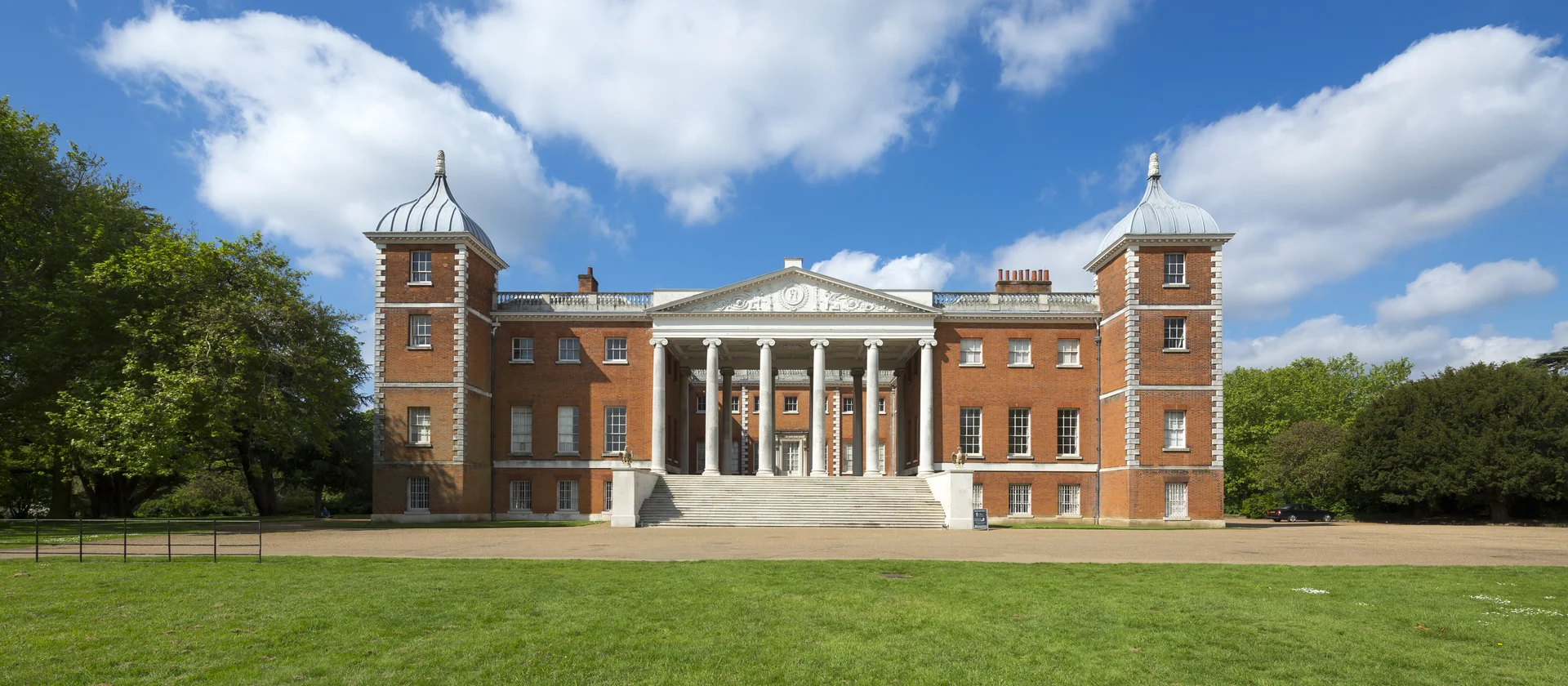
Address: Isleworth in the London Borough of Hounslow
Royal Air Force Museum London
Address: Grahame Park Way, London NW9 5LL, United Kingdom
Phone: +44 20 8205 2266
Wembley Stadium
在 Instagram 查看这篇帖子 Wembley Stadium (@wembleystadium) 分享的帖子
Address: London HA9 0WS, United Kingdom
Phone: +44 800 169 9933
Twickenham Stadium
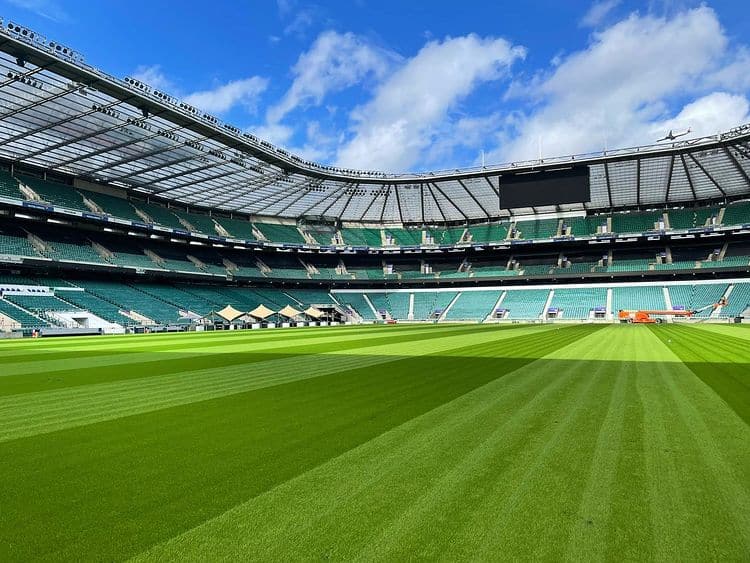
Address: 200 Whitton Rd, Twickenham TW2 7BA, United Kingdom
Phone: +44 20 3613 2036
Hampton Court Palace
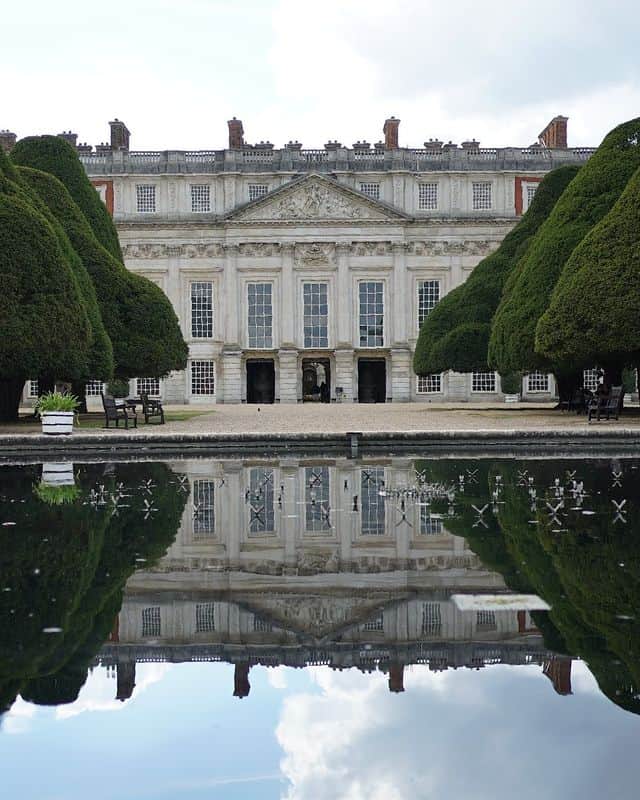
Address: Hampton Ct Way, Molesey, East Molesey KT8 9AU, United Kingdom
Before buying a payment card, take note of the places you want to visit in London and list down its zone.
With that in mind, you can already have an idea of the flow of your journey and the estimated cost of the fare.
Remember, follow the correct Touching in and out method per transportation to avoid penalty charges or paying the maximum fare.
What do you think about the London Fare Zones? Do you have any tips or recommendations for fellow travelers as well? Share them below in the comments section.
You May Also Love From Winterville.co.uk

7 Top Shooting Ranges in London for Gun Enthusiasts (Updated 2023)
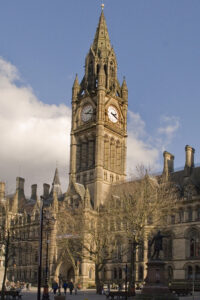
Uncovering The Best Places To Live In Manchester Uk | Where Are Safest And Dangerous Areas In Manchester?
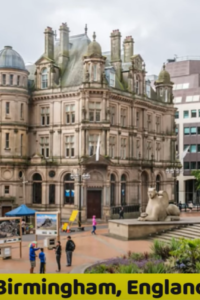
Find the Best Place to Live in Birmingham UK | Dangerous Areas and Safe Areas In Birmingham, Schools, Job Opportunities, and More!
2 thoughts on “London Zones Explained | A Guide to London Fare Zone Stations, Maps, Prices, and More”
Thank you for providing a thorough commuter guides. I plan to visit London soon and I find your blog very useful!
Thanks Elaine.
Leave a Comment Cancel reply
Save my name, email, and website in this browser for the next time I comment.
Your guide to getting around London like a true Londoner
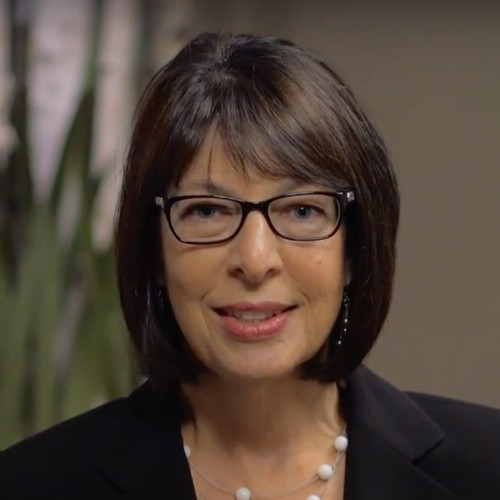
Career Storyteller, Master Resume Writer, Interview Coach
This post is part of our ultimate guide to moving to London as a graduate . It’s one thing to have your London crib all sussed out. It’s another to settle in and become a true Londoner. This is our guide to getting around London like you’ve lived here forever.
I remember my first trip to London vividly. A friend and I, both newcomers to the UK, were on our way to a pal’s spare room in Turnham Green. Armed with paper Tube maps (we’d both run out of mobile data), we then got resoundingly lost on the London Underground. Damn millennials who can’t read maps. When we finally escaped the turgid air of our Piccadilly line train, I remember thinking one thing. “Surely there must be an easier way to get around.”
Since that fateful trip in 2011, much has changed. For one thing, we’ve got helpful apps like Uber and Citymapper to help us get around – arguably the two biggest game-changers for the city of London. The Night Tube has launched. Crossrail is coming. Things will continue to change, we reckon. However, there are some hacks that’ll assist you in getting around no matter how the Tube map changes. Let’s start with the basics.
Table of Contents
London zones.
We touched on this a little in our guide to picking a place to live in London . In a nutshell, the great Big Smoke is divided into areas called ‘zones’ when it comes to transport.
If you take a look at the map above, you’ll notice that the zones of London progress from inside out. So, Zone 1 is basically Central London, and the further out you get from Zone 1, the higher the zone number will be.
Zones are important if you’re thinking of taking the Tube, the Docklands Light Railway, the London Overground and National Rail services. The reason why the ‘zones’ system exists is because they’re Transport for London’s way of calculating a customer’s travel distance.
Here’s an example. If you live in Zone 3 (let’s say Dollis Hill) and have to travel to Zone 1 (let’s say Old Street), you pay a single fare of ВЈ2.80 during off-peak* hours. However, Willesden Green, just one stop away from Dollis Hill, will incur a charge of ВЈ2.40 to the same destination. Why? Because Willesden Green is in Zone 2.
* A note about off-peak and peak hours
Transport for London (TfL), like some other national transport providers, charge higher fares at busy times in the day. Peak fares in London are charged from Monday to Friday (excluding public holidays), from 06:30 to 09:30 and 16:00 to 19:00.
Public transport
Yo, guys. There are so many ways to get around London-town. Here, we’re going to cover the most likely ways you’ll be getting around. This means, however, that we’re probably going to exclude the following:
The Emirates Air Line, Trams, River and Taxis & minicabs. Why? The first three only cover small, specific areas of London and aren’t as commonly used. As for minicabs, we’ll discuss other, more economical alternatives later, as these can be super-expensive.
Getting around London by the Tube and by rail
Ah, the iconic London Tube. Everyone’s got their opinion about it, but love it or hate it, getting around on the Underground is, for most commuters, an absolute necessity.
Look, we’re not going to break each Tube line down for you. Everyone’s level of London Underground usage is very different. However, here are our top tips on how to ride the Tube like a pro.
- Plan ahead. On the Docklands Light Railway and London Overground, there’s usually phone signal, but Underground you get nada. Some lucky people get WiFi depending on their phone networks, but only some. For your sanity, plot your route in advance.
- Understand your direction. Your route will be determined by the Line’s terminal destinations, and cardinal directions (northbound/southbound etc.) For example, in order to get from Colindale on the Northern Line to Elephant and Castle, you’ll take a “ Southbound train terminating at Morden .”
- Remember your line changes. Often, getting from one place to another means you’ll change from one Tube line to another. Don’t be alarmed, just make sure you remember which stop to get off at to switch lines. There’ll be signage pointing to the other line, so keep an eye out.
- Walk on the left, stand on the right. This is the absolute golden rule for London escalators. Breaking this rule will expose you as a newbie and slow everybody down. Don’t be that guy.
Getting around London by bus
Controversial opinion: London buses are underrated . For one thing, they don’t use the fare zones system, so each journey you take, no matter where you’re going and how far you’re travelling, will be a flat ВЈ1.50.
Also, London Mayor Sadiq Khan introduced the ‘ Hopper fare ‘ a while back making bus travel even cheaper. Make two bus journeys in a row, and you can get the second one for free. Pretty sweet, and great if you’re trying to budget on that tight graduate salary . Just bear these tips in mind:
- Just like the Tube, London buses are all cash-less. Don’t leave the house without your Oyster card or a contactless credit card.
- Unlike the Tube, sussing out your bus route isn’t as simple. You’d be wise to plan ahead using the TfL website to understand bus routes and your nearest bus stop.
- Many bus stops have multiple locations where buses stop, serving different routes. Make sure you’ve identified the right bus stop, by taking a look at the letter of the stop.
- Most bus stops have destination finders and maps. These can also be helpful for planning your journey.
- Some stops are request stops. Buses won’t stop at these unless someone wants to get off or if you flag them down. Take a look at the stop to see if it says ‘request stop’ on it – otherwise you’ll be wondering why no bus will stop for you.
- If you can’t see the ‘next stop’ display, listen out for it. Most buses will announce each of their next stops as they progress along the route. Make sure you get off at the right stop.
The Oyster Card and other payment methods
Look at this card. The double-blue, the smoothness of the white curve. This card, my friends, is the Oyster card. It’s literally your ticket to the city.
- Bus and rail travel in London is nearly 100% cash-less. You can top up your Oyster with cash credit and use it as a pay-as-you-go card.
- To use your Oyster card, there’ll be a yellow card reader you can tap to gain entry to a bus or to the Underground. (On trains, you need to tap in at the beginning of your journey, and tap out. On buses you don’t need to tap out, just tap in.)
- If you want, you can also load up your Oyster card with a weekly, monthly, or yearly Travelcard . This means you won’t need to top up as often, which is really convenient.
- The only other alternative to the Oyster card (bar paper season tickets), are contactless debit or credit cards . TfL introduced this system a couple of years ago, so, if you have a contactless card you can use that instead of the Oyster. The future, eh?
- You can buy Oyster cards from most Underground train stations. They cost (a refundable) ВЈ5, and then you top it up with whatever money you need.
Tickets and pricing
Guys… this is where it gets a little complicated. Remember our little talk about Zones earlier? That’s just the beginning of the various ways tickets and prices are calculated on London transport.
We’re not going to dive too deep into how much it costs to get from one zone to another. Instead, here’s a few things to keep in mind.
- Check your Oyster card balance before you travel. You can do this online, or at any Oyster top-up machine.
- Keep capping in mind. Capping is a feature of pay-as-you-go. It allows you to travel as much as you like either in a single day, or in a week (Monday to Sunday). It limits the amount you pay for all you travel – so, if for some reason you need to take a crazy number of journeys in a day, don’t stress! The travel cost gets capped.
- Weigh up the cost of a Travelcard. Occasionally, just getting a season ticket will be more cost effective and convenient that using pay-as-you-go. Check your budget and see if you need one. The only issue with this is, if you’ve purchased a Travelcard for certain zones, it’ll only be valid for those zones. Traveling outside of them will incur some extra charges.
- Check if you qualify for a discount. Under 25? Have a 16-25 Railcard? You can actually add your Railcard to your Oyster account online and get 1/3 discount on off-peak fares. Every penny counts, y’know.
Cycling in the city of London
You can hire bicycles in London to get around, which is possibly the best idea ex-London Mayor Boris Johnson championed during his tenure. Santander Cycles docking stations can be found literally all over London, which makes it super easy to get around and get exercise at the same time.
It’s an initial ВЈ2 to get access to a Santander Cycle for 24 hours. The first 30 minutes of each journey is free – after that it costs ВЈ2 per 30 minutes.
Useful apps you won’t be able to live without
We all know about Uber and Google Maps. How we got around without those two apps, I can’t even imagine. However, there are three more apps you should really clear some storage on your iPhone for:
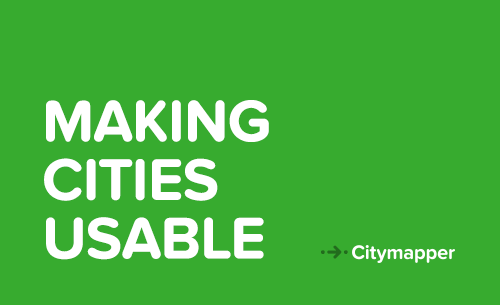
Pals, my love for Citymapper knows no bounds. It is by far the best app for getting around London. It’s journey planner is probably the best part about it – allowing you to mix up bus and Tube journeys easily. It’ll also estimate walking times, and provide you with rain-safe options. Sweet.
We’re mentioning Trainline here because of their fantastic user experience. It’s super easy to book train tickets if you need them (for when the city gets too much and you need an escape.) It’s also great for checking live train departures, if, like me, you commute using National Rail trains rather than a TfL service.
London Black cabs are usually more expensive than grabbing an Uber. However, if you’re pernickety about safety, you might feel more at ease in a licensed London Black cab. As a woman in a big city, I’ve found Gett to be a great Uber alternative. Plus, the fares are completely fixed, which is nice – no nasty fare surprises here.
What is the cheapest way to travel around London?
I asked Twitter about their top getting around hacks, and there was one common thread linking their responses. Their top tip? Walk.
Mine is to do more walking instead of tube – walk Leicester Square to Covent Garden etc see much more of London that way! – Louise Upchurch (@Loulou_Uberkirk) May 30, 2017
def walk, walk, walk! Never bother w tube for x3 z1 stops or less – Gail Emerson (@Gail_Em) May 30, 2017
@TfL do a great tube /walking map so you don’t have to stick to the underground. – Stuart Thomson (@Redpolitics) May 31, 2017
Heck, even TfL got involved.
Hi, if it helps at the map is available here – https://t.co/HMvycP4A8D – Transport for London (@TfL) May 31, 2017
Using apps such as Citymapper or even the TfL map above will help you plan the most effective way to get around. Trust us – if you’re traveling from Covent Garden to Leicester Square, it’s actually way more faff to take the Tube.
And there you have it! Check back next week for the final installment of our ultimate guide to moving to London as a graduate:
Your guide to meeting new people and making friends in London
Check out our available graduate jobs in London.
Say hi to us on Facebook , Twitter and LinkedIn ! We’d love to hear from you.
By completing this form, I agree that Debut may keep me informed of its products, services and offerings.

Get started
Take four minutes to set up your profile and have great grad jobs come to you.
Mapping London
Highlighting the best London maps
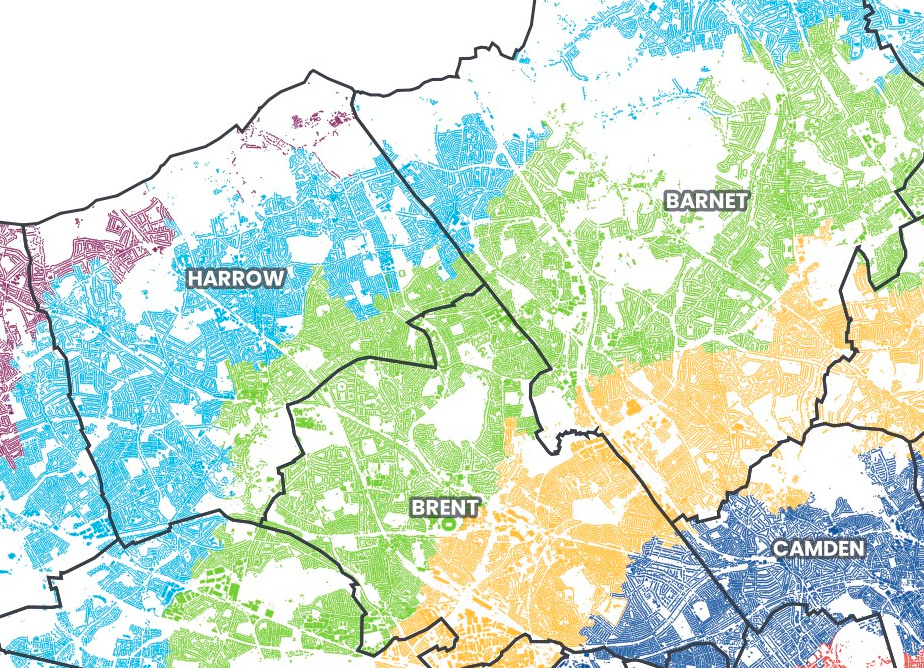
People in London generally know what tube zone they live “in”. There are no defined zones as such, zones are simply classifications assigned to each tube and railway station in, so it is likely people label their “zone” based on the zone of their nearest tube/railway station. Your zone, or the number of zones you travel in, set your journey fare.
Zones make a big difference to how much it costs to travel around London on the tube and railway network – particularly when travelling into or out of Zone 1 in the centre. As such, there are fairly regularly campaigns to get certain stations reclassified by Transport for London, who defined and control the zone system. Such a change though sometimes creates more problems than it solves – as TfL changed Stratford to Zone 2/3 from Zone 3, after the London 2012 Olympics gave this east London hub more prominence. Changing to Zone 2 would have made it cheaper to get from Stratford to central, but more expense for people travelling from outer London to Stratford – so the Zone 2/3 is a cartographically ugly compromise on the tube map.
Anyway – despite the lack of zone “areas” as such, the GLA published a dataset assigning each small statistical area in London to a zone, based on the nearest station – and Alasdair Rae has mapped this data onto a base Ordnance Survey dataset showing all building blocks in London, and coloured all the buildings in each zone with a distinct colour. Visually it is rather striking. It shows, if nothing else, that the fares are “fair” – there is no great consipracy, rather just that they are concentric rings, slightly squished because London is wider than it is tall, due to the effect of the ancient settlement running along the Thames and lines of hills to the north and south.
It also shows, much better than a normal borough map, which London boroughs are actually “inner” (Zones 2-3), which are “outer” (Zones 4-6?) and which are a bit of both. For example, Haringey is unambiguously a Zone 3 borough, and Redbridge, despite being on the London border, almost entirely Zone 4 – because the London border is really not far from the centre of town, here. It also shows just how rural much fo Zone 6 is -the majority of Zone 6 Bromley, for example, has no buildings nearby.
There are a couple of alternative versions – his original minimalist one with no borough boundaries , and one with the tube stations on it.
London’s fare zones actually extend out of Greater London these days – but that’s a map for another day.
- View the original map.

Maps © Alasdair Rae.
- Pingback: London’s weekly railway news
Why is an area quite far into the conurbation like Kingston in Zone 6 while areas further out are often in Zone 5 ? Also, why is Epsom, clearly part of the conurbation, not in Zone 6 ?!?
Have to disagree as a Woolwich resident who lives in zone 4, a rivers width away from zone 3 on the direct opposite bank of the river… also are you aware a train journey south of the river cost more than a TFL dlr/tube journey from the same zone, unlike North of the river where all forms of railed transport charge the same for a zone 4 to 1 journey
I’ve made a more accurate version of this. See https://rti2-demo.whoosh.media/demo/demo
Southwest London is being completely robbed by the Zone system. So many places here should be in zone 3 4 or 5. Many are unfairly in Zone 6 regardless of their actual distance from the city center, It’s as if all the rules of this system go out the window when applied to Southwest London!?
- Pingback: British lack-of-flair in naming things « Quotulatiousness
Leave a Reply Cancel reply
Your email address will not be published. Required fields are marked *
Detailed Maps of Europe
Map of Europe with capitals
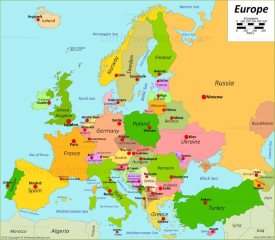
Physical map of Europe
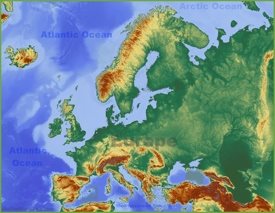
Rail map of Europe
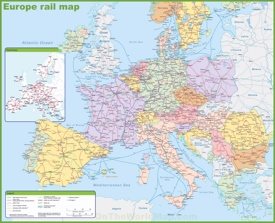
Map of Europe with countries and capitals
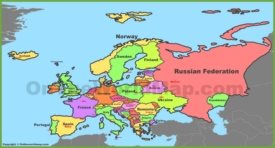
Political map of Europe
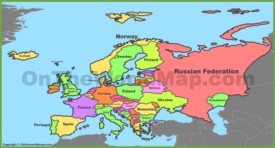
Outline blank map of Europe
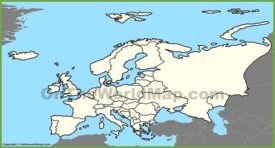
European Union countries map
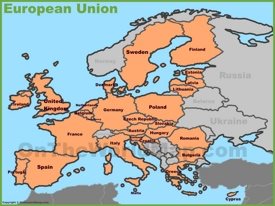
Europe time zones map
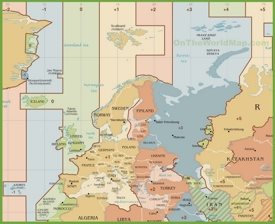
Europe location map
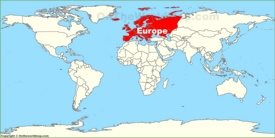
Regions of Europe
Balkan countries map
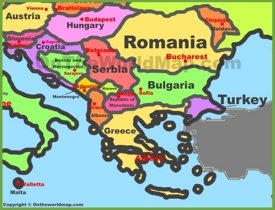
Baltic states map
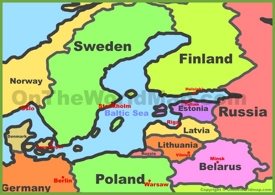
Map of Scandinavia
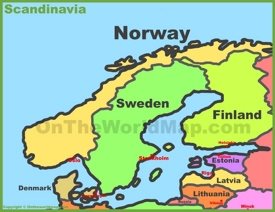
Western Europe map
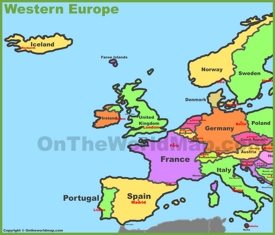
Map of Central Europe
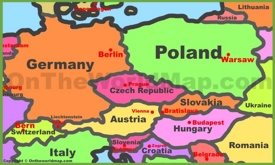
Map of Eastern Europe
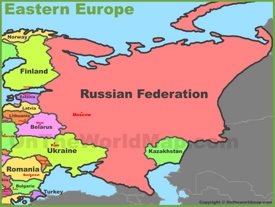
Map of Northern Europe
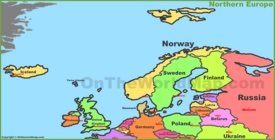
Map of Southern Europe
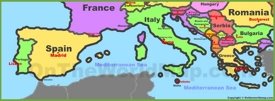
Map of Europe with cities
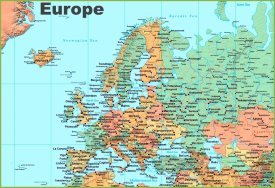
Countries of Europe
- Bosnia and Herzegovina
- Czech Republic
- Faroe Islands
- Isle of Man
- Liechtenstein
- Netherlands
- North Macedonia
- Switzerland
- United Kingdom
- Vatican City
Cities of Europe
- ALL CITIES OF EUROPE
- CAPITALS OF EUROPE
Capital Cities of Europe
- Capital - Country
- Amsterdam (official) - Netherlands
- Andorra la Vella - Andorra
- Athens - Greece
- Belgrade - Serbia
- Berlin - Germany
- Bern - Switzerland
- Bratislava - Slovakia
- Brussels - Belgium
- Bucharest - Romania
- Budapest - Hungary
- Cetinje (Old Royal Capital) - Montenegro
- Chișinău - Moldova
- Copenhagen - Denmark
- Douglas - Isle of Man
- Dublin - Ireland
- Gibraltar - Gibraltar
- Helsinki - Finland
- Kyiv - Ukraine
- Lisbon - Portugal
- Ljubljana - Slovenia
- London - United Kingdom
- Luxembourg - Luxembourg
- Madrid - Spain
- Mariehamn - Åland Islands
- Minsk - Belarus
- Monaco City - Monaco
- Moscow - Russia
- Nicosia - Cyprus
- Nur-Sultan - Kazakhstan
- Nuuk - Greenland
- Oslo - Norway
- Paris - France
- Podgorica (official) - Montenegro
- Prague - Czech Republic
- Pristina - Kosovo
- Reykjavik - Iceland
- Riga - Latvia
- Rome - Italy
- San Marino - San Marino
- Sarajevo - Bosnia and Herzegovina
- Skopje - North Macedonia
- Sofia - Bulgaria
- St. Helier - Jersey
- St. Peter Port - Guernsey
- Stockholm - Sweden
- Sukhumi - Abkhazia
- Tallinn - Estonia
- Tbilisi - Georgia
- The Hague (de facto) - Netherlands
- Tirana - Albania
- Tiraspol - Transnistria
- Tórshavn - Faroe Islands
- Tskhinvali - South Ossetia
- Vaduz - Liechtenstein
- Valletta - Malta
- Vatican City - Vatican City
- Vienna - Austria
- Vilnius - Lithuania
- Warsaw - Poland
- Yerevan - Armenia
- Zagreb - Croatia
- North America Map
- South America Map
- Oceania Map
Popular maps
- New York City Map
- Los Angeles Map
- Las Vegas Map
- Australia Map
- Germany Map
- Netherlands Map
- Singapore Map
- United Arab Emirates Map
- United Kingdom Map
- United States Map
U.S. States
- Arizona Map
- California Map
- Colorado Map
- Florida Map
- Georgia Map
- Illinois Map
- Indiana Map
- Michigan Map
- New Jersey Map
- New York Map
- North Carolina Map
- Virginia Map
- Wisconsin Map
Distance Calculator – How far is it?
The Distance Calculator can find distance between any two cities or locations available in The World Clock
The distance is calculated in kilometers, miles and nautical miles, and the initial compass bearing/heading from the origin to the destination. It will also display local time in each of the locations.
From location
To location.
Need some help?
More Information
- About the World Clock
- Daylight Saving Time
- Time Zone Abbreviations
- Time Tools Overview
Related Links
- See cities close to a location
- Day and Night World Map – See which parts of the Earth are currently illuminated by the Sun.
- About the Distance Graph
Related Time Zone Tools
- Event Time Announcer – Show local times worldwide for your event.
- Meeting Planner – The best times for your meeting across time zones

The Man in Seat 61
Europe to China via Kazakhstan
Central asia by train.
- Buy train tickets
- Buy ferry tickets
- Book a hotel
- Privacy & cookies
- Home
Train travel UK & Ireland...
Train travel in europe..., train travel in asia..., train travel in africa..., train travel in america..., train travel in australasia, through central asia by train.
The most usual (and easiest) route from Europe to China is via the classic Trans-Siberian Railway , shown in blue on the map below. But there is another route now open to foreigners, the so-called Silk Route via Kazakhstan, shown on the map in yellow. Let's be clear, if you want to travel between Europe and China, the main Trans-Siberian route is faster and easier to arrange, both in terms of visas and train tickets - for a start, just one Trans-Siberian train will get you all the way from Moscow to Beijing. The Silk route will take a little more thought and organisation, with more visas, train tickets and stopovers to arrange. However, this page will explain routes, train times, costs and how to buy tickets. You can also use trains to reach Central Asia from Europe and Moscow.
Important update 2024 : All trains between western Europe and Russia are suspended, originally due to Covid-19, now due to the war in Ukraine & sanctions. Travel to Russia is no longer advisable. International trains between the Stans and China are also remain suspended since the pandemic. This route is currently not viable. Nor is a route via Iran feasible, given the difficulty in getting visas.
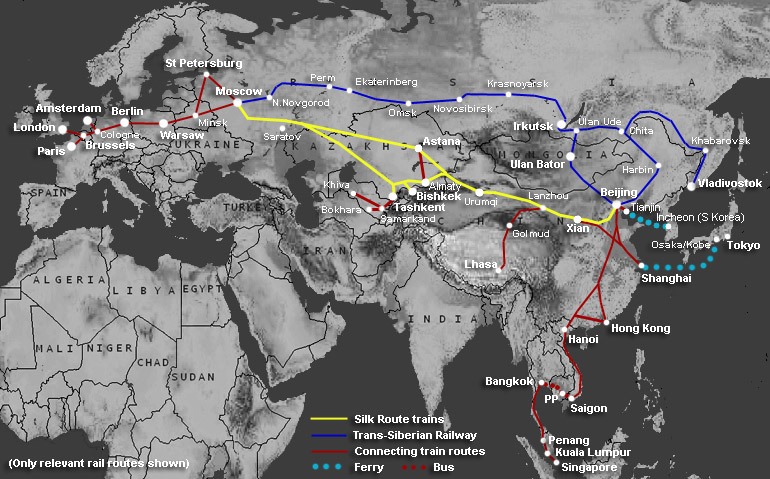
London - Moscow
You can travel from London to Moscow by train, for times, fares, how to buy tickets and Russian visa information, see the London to Russia page . Direct sleeper trains run to Moscow from Paris, Vienna, Prague, Warsaw, Berlin, Budapest, Helsinki and many other cities, go to this page and select your starting city, then select Moscow . You will usually need a Belarus transit visa as well as your Russian tourist visa, see the visa section on the Russia page .
Trains to Russia were suspended due to Covid-19 and remain suspended due to sanctions .
Back to top
Moscow - Almaty & Astana (Kazakhstan)
Trains link Moscow with both Almaty and Astana in Kazakhstan. A direct train links Moscow with Astana every 2nd day. The time-honoured direct Moscow-Almaty train Kazakhstan was sadly discontinued in June 2017 (nobody knows what RZD is playing at here), but it's still possible to travel between Moscow and Almaty with a change at Saratov as shown below. Or you can travel from Moscow to Astana then Astana to Almaty, which may be better.
The best place to confirm days of running & times, including times of border crossings (and therefore entry dates for visa purposes) is at the Russian Railways site www.rzd.ru .
The Saratov times shown above are Moscow time. Local time is one hour head of Moscow time.
UPDATE: After decades of running to Moscow time, from 1 August 2018 trains are shown in local time on Russian timetables, usually with the difference from Moscow time shown in brackets, for example (MCK +5) .
Train 7 & 8: Kupé (4-berth) and platskartny (open plan berths). There are no 2-berth sleepers. Southbound, train 8 departs Saratov on even dates (2nd, 4th, 6th etc of each month). Northbound, train 7 departs Almaty also on even-numbered dates. The train passes from Russia into Kazakhstan, but briefly transits another part of Russia before re-entering Kazakhstan. However, it is reported that you just need single-entry visa for Russia to travel on this train. Multiple-entry visas are not required for this. In fact, this Kazak visa question may have been resolved completely, as Kazakhstan has removed the need for UK & some other nationalities to get a visa from 2014 onwards -please check the latest Kazak visa situation. Moscow to Almaty is 4,017 km in total.
Train 17: A Russian domestic firmeny (quality) train with spalny vagon (2-berth), kupé (4-berth) and platskartny.
Trains 83 & 84: Train 84 leaves Moscow's Kazanski station on even-numbered dates (2nd, 4th, 6th etc of each month). Train 83 leaves Astana on even-numbered dates. The train has kupé (4-berth sleepers) & platskartny (open plan dormitory cars) plus restaurant car. There are now no 2-berths, but you can book 4 tickets in a 4-berth to have sole occupancy for one or two of you. Moscow to Astana is 3,105 km.
Fares: Moscow to Astana costs around £247 in kupé.
How to buy tickets: You can book train travel in Russia, including this train, through several reputable Russian agencies, including:
You can make arrangements for trains, hotels and tours in Kazakhstan and Uzbekistan through local agencies such as www.tourasia.kz . You will need Russian tourist visa for this journey (by all means double-check, but at the time I write this Kazakhstan no longer requires UK & some other nationals to get a visa. For information on Russian visas, see the visa section on the Russia page .
What are the trains like?
Moscow-Almaty better via Astana than direct? Traveller Chris Nuttall suggests going Moscow-Almaty via Astana: "I travelled from London to Almaty (Kazakhstan) and back last autumn (2009). On the return journey I travelled via Astana and as a result made the journey from Almaty to London in under 5 days, about 13 hours quicker than using the (then) direct train from Almaty to Moscow. I departed Almaty 2 station at 19:28 on the daily Talgo overnight train to Astana (train number 1/2) and travelled in Platskartny which consisted of 4 berth compartments, the same as the 'Tourist class' on the Spanish railways own Talgo sleeper trains, rather than the usual Russian semi-open carriages. According to my sister, who lives in Almaty and has used this train on a number of occasions, this service has a reputation for arriving punctually, unlike many other trains in Kazakhstan. I then used train 83/84 to Moscow as shown on your site. As well as being quicker and giving me the opportunity to explore Astana for a few hours, this route only crosses the Russia / Kazakhstan border once. I know you mention that only single entry visas are required for train 7/8, but I couldn't find further information on this, so my chosen route gave me added peace of mind."
Moscow - Bishkek (Kyrgyzstan )
A train called the Kirgizia links Moscow with Bishkek in Kyrgyzstan, with 4-berth sleepers & restaurant car. No 2-berth sleepers.
The best place to confirm days of running & times, including times of border crossings (and therefore entry dates for visa purposes) is at the Russian Railways site www.rzd.ru
Fares: Moscow to Bishkek costs £295 in 4-berth kupé.
How to buy tickets:
Moscow - Tashkent (Uzbekistan)
There is a train running 3 times a week from Moscow to Tashkent in Uzbekistan. This is the Uzbekistan , with Spalny Vagon (2-berth sleepers), kupé (4-berth sleepers) and platskartny (open plan dormitory car) plus restaurant car. The train passes from Russia into Kazakhstan then it enters Uzbekistan.
The best place to confirm days of running & times, including times of border crossings (and therefore entry dates for visa purposes) is at the Russian Railways site www.rzd.ru .
Fares: Moscow to Tashkent costs around £415 in 4-berth kupé or £461 in 2-berth spalny vagon.
Visas: You will need a Russian tourist visa and Uzbekistan tourist visa for this journey. For information on Russian visas, see the visa section on the Russia page . By all means check the latest Kazak visa situation but at the time I write this Kazakhstan no longer requires UK & some other nationals to get a visa.
You can make arrangements for trains, hotels and tours in Kazakhstan and Uzbekistan through local agencies such as www.tourasia.kz or www.advantour.com .
Travellers' reports
Traveller Jeff Mortelette travelled Tashkent to Moscow in 2016: " The boarding arrangements were crazy. We arrived an hour early and made our way to the security check. There were tons of people pushing to get in. I think there was another train leaving right before us, so a lot of people were trying to get on that train. We waited in line for about half an hour before we realized we needed to start pushing our way to the front if we wanted to catch the train. We finally got through with about 10 minutes to spare and hustled to the platform. We got on our car with a few minutes to spare.
The train left Tashkent at 18:50. About half an hour later we spent 80 minutes at the border while Uzbek border patrol went though. They had me open some bags and answer some questions about where I was going and why. They spoke no English. We went for 20 more minutes and did the same thing with the Kazak border control. It was pretty similar when we left Kazakhstan/entered Russia. We only entered Russia once.
On the train there were a few power sockets. One at each end and one in the middle, but none in our cabin. A nice feature is each car had shot water dispenser people used for noodles or tea. We also had one employee of the train assigned to each car and ours was really helpful, especially when crossing borders.
There was a restaurant car that served Uzbek staples: plov, lagman, and dumplings. In addition sometimes people would go by our cabin and sell the food the restaurant cooked. My friend and I got two bowls of plov and scopula beers for around $7. It was pretty good for plov, but there was not much variety. We paid in Kazak Tenge, but you could also pay in som or rubles. It would help to not carry big bills; I couldn't use my 10,000 Tenge note. In addition to he food on the train, many stops of at least 20 minutes had places you could buy food. Mostly crackers, potato chips, candy bars, water and soda, and uncooked ramen noodles. Each car of the train had a place where you could get hot water that many people used for tea and ramen noodles. In Samara, we could find more food for sale: cheese, bread, sausage. In general the closer we got to Moscow the more choices we had when we stopped."
Tashkent - Samarkand - Bokhara - Urgench (for Khiva): See the Uzbekistan page
For train service within Uzbekistan, linking Tashkent, Samarkand, Bokhara & Urgench, see the Uzbekistan page .
Tashkent - Almaty
There is now a train every few days between Tashkent and Almaty, using a modern Talgo train. You can buy tickets at tickets.kz .
Almaty & Astana (Kazakhstan) - Ürümqi (China)
Direct train twice a week.
Two trains per week link Almaty in Kazakhstan with Ürümqi in China, one using the original route through Druzhba/Alashankou, the other via the new much shorter route through Horgos/Altynkol. One train per week carries through cars Astana-Ürümqi. One set of carriages is Kazak with 2-berth and 4-berth sleepers, the other set Chinese with modern air-conditioned soft class 4-berth sleeper compartments and hard class open-plan bunks. A Kazak restaurant car runs Almaty to the border, and a Chinese restaurant car runs from the border to Ürümqi. If you use this route, please let me know !
Update: International trains to/from China remain suspended due to Covid-19.
One train is operated by Kazakhstan Railways, the other by Chinese Railways. Astana is now also known as Nur-Sultan.
Which station in Urumqi? There are two main stations in Urumqi, plain Urumqi which opened in 2016 just northwest of the city centre ( see map ), and Urumqi Nan ( see map ) which is the original Urumqi station, south of the city centre, and confusingly called plain Urumqi until 2014. These trains use the new Urumqi station. Urumqi has an unofficial local time 2h behind normal Chinese time, but the times shown above for Urumqi are all the official Beijing time zone used by the railways.
Check your train times & dates carefully as times and days of running have changed regularly over the years, and there is much conflicting information online depending where you look . You can get more definitive info at the Kazakhstan Railways online timetable at epay.railways.kz but you need to be clever with cutting and pasting Cyrillic place names алматы for Almaty and урумги for Urumqi.
Fares: Almaty to Ürümqi costs around £123 in 4-berth or £138 in 2-berth.
How to buy tickets: You can book these trains for westbound journeys at www.chinahighlights.com/china-trains (click International Train from China above the journey planner) for westbound journeys.
Traveller's report
Traveller Tom Earwaker reports: "Departure was 23:14 on Monday 14/10/19, Beijing time. Note that there's an unofficial local time in Urumqi, 2 hours behind Beijing, but train times are all in Beijing time. The train had around 10 carriages, I only counted about 18 people getting on! I had a 4-berth compartment to myself up to the border crossing and there was a nice German couple in the next compartment. It was an old train, but clean and comfortable, with bedding and hot water provided. Got to the China side of the border around 9am where security checked passport, looked around compartment and asked some questions about reason for travelling, where we went in China, etc. Got off the train 09:30 with luggage, more questioning (about purpose of visit, my job, and whether I liked China!), luggage search and they took fingerprints. They also looked though the photos on my phone for quite a while and the books on my kindle. It was quite thorough, but they weren't unfriendly about it. Back on the train and left the station around 11:00, reaching the Kazakh side of the border at 11:20 (09:20 Kazakh time) There was 1.5hr of security checking passport, checking bags, questioning and waiting, all carried out on the train. Then we had to get off the train for another 1.5hr and wait at Druzhba station while they changed the wheels over. There was a small cafe at the station serving typical Russian/Kazakh food (Borscht, Samsa, Plov etc.) and I was able to exchange Yuan for Tenge at the station's convenience store (also a bank nearby with similar exchange rate). We left at 12:40 Kazakh time, and the train very quickly filled up over the next few stops. Arrived in Almaty 2 station at 05:50 next morning (16/10/19)."
Ürümqi - Xian - Beijing
All these trains have soft & hard sleepers and most have a restaurant car, see the Train Travel in China page for general information about trains in China. There are other trains available between Ürümqi and Xian and between Xian and Beijing, see the Train Travel in China page .
Fares: Ürümqi to Beijing costs around RMB 901 ($146) in soft sleeper or RMB 566 ($92) in hard sleeper, if bought at the station. Ürümqi to Xian costs around RMB 768 ($124) in soft sleeper.
You can check times & buy tickets at www.chinahighlights.com/china-trains . Not all trains are shown here!
* Trains Z179/Z180 use Beijing main station, not Beijing West.
Planning your trip
Probably the best way to plan a trip like this is to start by reading up on all the possible routes, trains and stopovers, then plan out an itinerary and budget using a simple table or spreadsheet: How to plan an itinerary & budget .
Back to home page
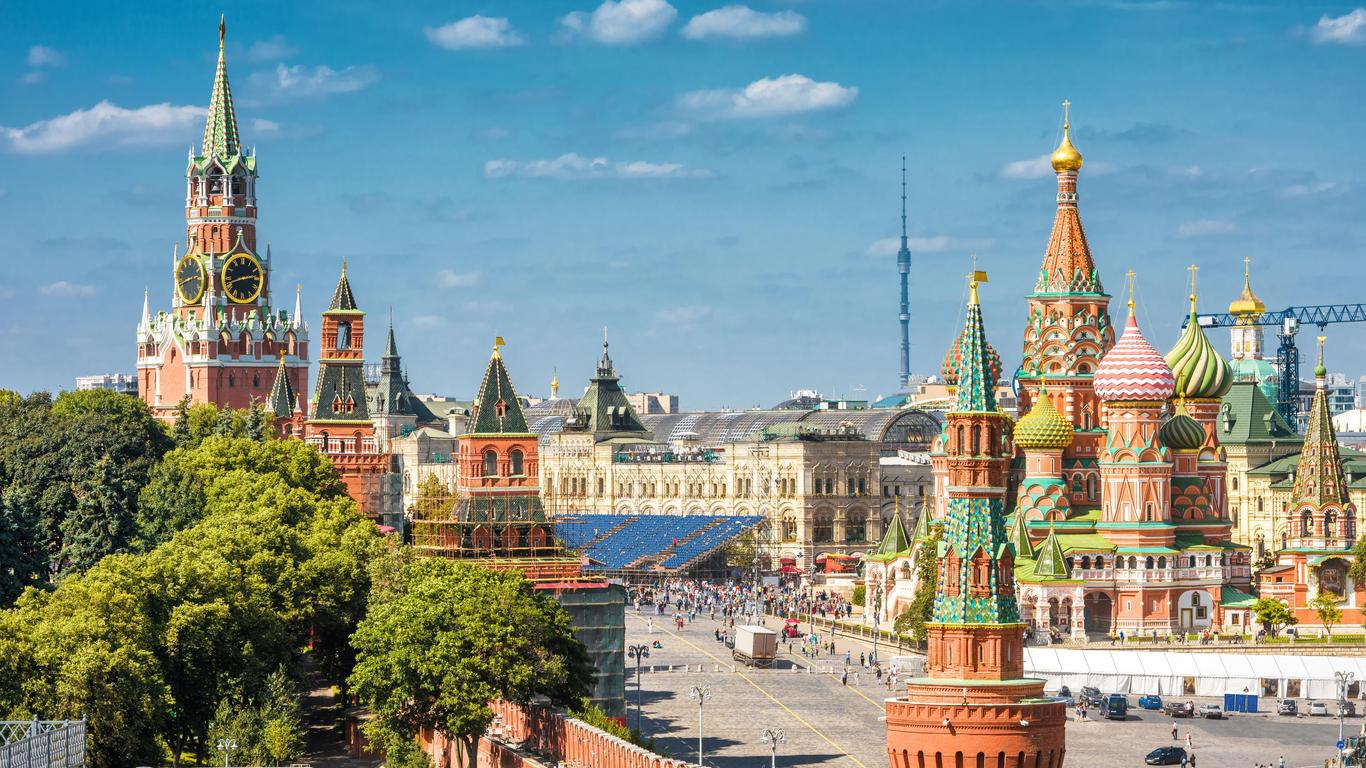
Find cheap flights from London to Moscow
Search hundreds of travel sites at once for deals on flights to moscow.
Save 30% or more Compare multiple travel sites with one search.
Track prices Not ready to book? Create a price alert for when prices drop.
Filter your deals Choose cabin class, free Wi-Fi and more.
Bundle and save Save money when you bundle your flight + hotel.
Cheap flight deals from London to Moscow (LON-MOW)
When to book flights from london to moscow, faqs for booking flights from london to moscow, can i exchange my currency at moscow airports (mow).
When you land at MOW Airports, you can change your currency with ease. For example, at Sheremetyevo Airport (SVO), you can find a SBERBANK at the Aeroexpress Teriminal. There is also an Exchange Express in terminals D, E and F. At Domodedovo Airport (DME), there is a SBERBANK on Level 2 once you land.
Are there hotels at London Airport (LON)?
Before you depart from LON Airports, you can stay at a hotel the night before. For example, Heathrow has an Aerotel in T2 or a Sofitel in T5. Gatwick has a Sofitel in the North Terminal, whereas Stansted has a Holiday Inn Express. The hotels are close to check-in areas so it’s easy to get the airport the following morning.
Are there any services at Gatwick Airport for those travelling with children?
To help you go through security without worrying about security restrictions on baby milk formula or baby food, you can order up to 2 tubs of baby milk on the Boots website in advance of your trip, that can then be picked up once you pass through security at Gatwick Airport. To help keep your children entertained, there is a Kids Zone in both the North and South Terminals, with games and a TV.
How do I travel from Moscow Airport into the city using public transport?
The airports around Moscow are all connected to the city by public transport. If you‘re flying into Domodedovo Airport, you can travel the 1h 35min to the city centre by taking the the Aeroport-Domodedovo – Moskva (Paveletskiy Vokzal) line. Tickets cost around 138 p. (£1.60) per person. Alternatively, Sheremetyevo, Domodedovo and Vnukovo airports all have their own Aeroexpress services travelling to the Belorussky Railway Terminal.
Are there any currency exchange services at Heathrow Airport?
If you are looking to purchase Russian Rubles before your flight, you can find Travelex currency exchange services at Heathrow Airport. It is, however, recommended that you order your currency online at the airport website before your flight. There are 35 different counters to pick up your currency throughout the airport, including in the terminal departure areas.
Are there any hotels in Moscow that offer a shuttle to the airport?
With all of the major airports around Moscow being at least 1h away from the city centre, many hotels offer airport shuttle services to help you travel to and from your flight. If you‘re looking for accommodation in the centre of Moscow, 5-star hotels Four Seasons Hotel, Metropol and the Savoy in downtown Moscow all offer free airport shuttles. For more budget-friendly options, the GoodMood Hostel and Hotel Petrovka near the centre also offer shuttle options.
Which aircraft models fly most regularly from London to Moscow?
We unfortunately don’t have that data for this specific route.
How does KAYAK find such low prices on flights from London to Moscow?
KAYAK is a travel search engine. That means we look across the web to find the best prices we can find for our users. With over 2 billion flight queries processed yearly, we are able to display a variety of prices and options on flights from London to Moscow.
How does KAYAK's flight Price Forecast tool help me choose the right time to buy my flight ticket from London to Moscow?
KAYAK’s flight Price Forecast tool uses historical data to determine whether the price for a flight to Moscow from London is likely to change within 7 days, so travelers know whether to wait or book now.
What is the Hacker Fare option on flights from London to Moscow?
Hacker Fares allow you to combine one-way tickets in order to save you money over a traditional return ticket. You could then fly to Moscow with an airline and back to London with another airline.
What is KAYAK's "flexible dates" feature and why should I care when looking for a flight from London to Moscow?
Sometimes travel dates aren't set in stone. If your preferred travel dates have some wiggle room, flexible dates will show you all the options when flying to Moscow from London up to 3 days before/after your preferred dates. You can then pick the flights that suit you best.
KAYAK’s top tips for finding a cheap flight from London to Moscow
- If you find cheap flights from London to Moscow you are able to relax at a lounge before you take-off. For instance, in Terminal 2 of Heathrow Airport (LHR) there is the Plaza Premium Lounge which costs about £40 per person. At Gatwick Airport (LGW), there is The Gateway Lounge that costs around £28. Similarly, at Stansted Airport (STN), you can use the Escape Lounge for approximately £20. At the lounges you can enjoy a range of refreshment options, free wi-fi and charging stations.
- British citizens travelling to Moscow (MOW) need a visa from the Russian Embassy before travelling. You will also need to go to a Biometric Data Centre to provide your fingerprint. Additionally, our passport must be valid for at least six months after the date your visa expires.
- If you are travelling with a disability at London Airports (LON), you can seek assistance before you get to the airport by contacting your airline at least 48 hours in advance. Heathrow has the SignLive App, which helps deaf passengers communicate with the staff, whereas at Gatwick, there is a Sensory Room for those with hidden disabilities like autism.
- When booking your flights from London to Moscow, you can find flights from all of London‘s major airports. Those only looking for direct flights ought to search for flights out of London Heathrow Airport (LHR) or Gatwick Airport (LGW).
- Sheremetyevo Airport (SVO) is considered Moscow’s main airport, located 1h north of Moscow. However, there are another three alternative airports that service Moscow – the Vnukovo International Airport (VKO), Domodedovo Moscow Airport (DME), and Zhukovsky International Airport (ZIA).
- If you need somewhere to store your luggage so that you can explore Moscow unimpeded, you can find luggage storage facilities at Sheremetyevo Airport on the first floor of Terminals B, D, E and F. Prices start at around 500 p. (£5.90).
- To travel to your flight from London Heathrow to Moscow, you can catch the Piccadilly Line of the London Underground to Heathrow Airport. This will take you to the station for Terminals 2 and 3, Terminal 4 or Terminal 5. Alternatively, the Heathrow Express takes 15 min to travel from Paddington Station to the airport.
- If you‘re looking for a bite to eat after your flight from London to Moscow, there are two coffee shops on Level 1 of Zhukovsky Airport. You can grab a coffee to go at the Coffee House – Russia‘s largest coffee chain – or you can sit down and relax at Café Shokoladnitsa.
Book cheap flights from London to Moscow
One-way flight deals, search by stops, everything you need to know for your flight from london to moscow, complete your trip to moscow with a hotel stay or car hire, choose which airport to fly into in moscow, find deals for your return flight.

IMAGES
VIDEO
COMMENTS
Open up a free Footways map. Explore London's quiet and interesting streets with this colourful guide. For nearby stations, stops and piers and other places of interest. TfL Tube and Rail maps, Bus maps, Santander Cycle maps, River maps, Congestion Charge maps, Oyster Ticket Stop map, visitor and tourist maps, audio maps.
London Transport Zones. London is divided into 1-9 zones*, but most of it fits into zones 1-6. Central London is zone 1, zone 2 is the ring around zone 1, zone 3 is the ring around 2 and so on. *zones 7,8 and 9 cover a small area just outside North West London including Watford, Croxley Green, Rickmansworth, Amersham or Chalfont & Latimer.
Hackney Hackney Central Wick Hornchurch. The Night Tube runs on Friday and Saturday nights on the Jubilee and Victoria lines and on most of the Central, Northern and Piccadilly lines. Night services also run on part of London Overground. Slough Kilburn Park Edgware Road. Outside fare zones, Perivale Maida Vale.
The London Tube map [PDF 1.2 MB] makes navigating London's Underground rail network simple. This easy-to-use London Tube map shows all nine travel zones, including Zone 1, which covers central London. It also indicates stations with step-free access, riverboat services, trams, airports and more.
Pay to drive in London; Travel tools; Home; Maps; Tube and Rail; Tube; Tube. Search for stations ... (Zones 1-3) PDF 322KB Steps at street level between stations including National Rail (Zones 1-3) PDF 328KB Toilet facilities - Tube and rail map . PDF 505KB Night Tube and London Overground map. PDF 912KB Night Tube taxi rank guide . PDF 219KB ...
Some of London´s most famous neighbourhoods are also located in zone 1, such as Notting Hill, Chelsea and Kensington. The most visited tourist attraction outside of zone 1 in London is probably Camden Market which is located in zone 2. To travel between zones 1 and 9 on public transport, including underground, overground, DLR, buses, trams and ...
Zone 2. London Zone 2 is the inner city that wraps around Zone 1. It is not in the city centre but closer to the centre than zone 3. You can expect Notting Hill, Camden Town, and London Zoo. Zone ...
Travel information for all London Tube lines: maps, timetables and fares. Skip to navigation Skip to content Skip to footer Transport for London. Search the site. Fares; Help & contacts; ... See our maps and guide for Zones 1-2. Walking times between Tube stations. PDF 581KB Delays. You may get a refund if your journey was delayed by 15 minutes ...
London travel zones. London's public transport network spans the central region of London as well as the broader surrounding areas of Greater London, divided into 9 distinct zones, labeled Zone 1 through Zone 9. The core of London, housing the majority of major attractions, falls within Zones 1-2. Suburban locales and renowned landmarks such as ...
Learn more about London's transport zones below. The London Transport Network spans six different zones, covering 55 square miles of inner and outer London. By looking at the network map, you can plan your trip and determine which zones you will need to visit.
Travel zones for Tube and rail. The city's Tube and rail systems are divided into zones, radiating outwards from Zone 1 in the very center to Zone 9 as the outer section in Greater London to the north (it goes as far as Zone 6 to the south).
It includes the London Zones 1-6 map and Zones 7-9 map. (London Zones 1 9 Map by Sameboat via Wikimedia Commons) (London Underground Zone 1 by Edg2s via Wikimedia Commons) ... If you plan to travel across Zones 1 to 6, here are some areas of interest to visit. You can make the most of the zones included in your card by traveling to the popular ...
London underground, transport and travel zone maps. Read our guide to London's transport options, so you don't look like a gobsmacked tourist for long. Learn more from Debut Careers experts insights. ... If you take a look at the map above, you'll notice that the zones of London progress from inside out. So, Zone 1 is basically Central London ...
Changing to Zone 2 would have made it cheaper to get from Stratford to central, but more expense for people travelling from outer London to Stratford - so the Zone 2/3 is a cartographically ugly compromise on the tube map. Anyway - despite the lack of zone "areas" as such, the GLA published a dataset assigning each small statistical ...
Map of Europe with countries and capitals. 3750x2013px / 1.23 ... 2000x1500px / 749 Kb Go to Map. Europe time zones map. 1245x1012px / 490 Kb Go to Map. Europe location map. 2500x1254px / 595 Kb Go to Map. Regions of Europe. Balkan countries map. 992x756px / 210 ... New York City Map; London Map; Paris Map; Rome Map; Los Angeles Map; Las Vegas ...
The Distance Calculator can find distance between any two cities or locations available in The World Clock. The distance is calculated in kilometers, miles and nautical miles, and the initial compass bearing/heading from the origin to the destination. It will also display local time in each of the locations.
Get cycling with leisurely routes perfect for Sundays. Help & contacts. Plan your journey across the TfL network. Journey planner for Bus, Tube, London Overground, DLR, Elizabeth line, National Rail, Tram, River Bus, IFS Cloud Cable Car, Coach.
However, this page will explain routes, train times, costs and how to buy tickets. You can also use trains to reach Central Asia from Europe and Moscow. Step 1, London - Moscow - This is the first step, with daily trains taking 48 hours. Step 2, Moscow - Almaty or Astana (Kazakhstan) - This is the direct option, take this route if you want to ...
Here are some of the best deals found on KAYAK recently from the most popular airlines for round-trip flights from London to Moscow that are departing in the next months. While these flights were available on KAYAK in the last 72 hours, prices and availability are subject to change and deals may expire. Discover the best prices and deals for ...